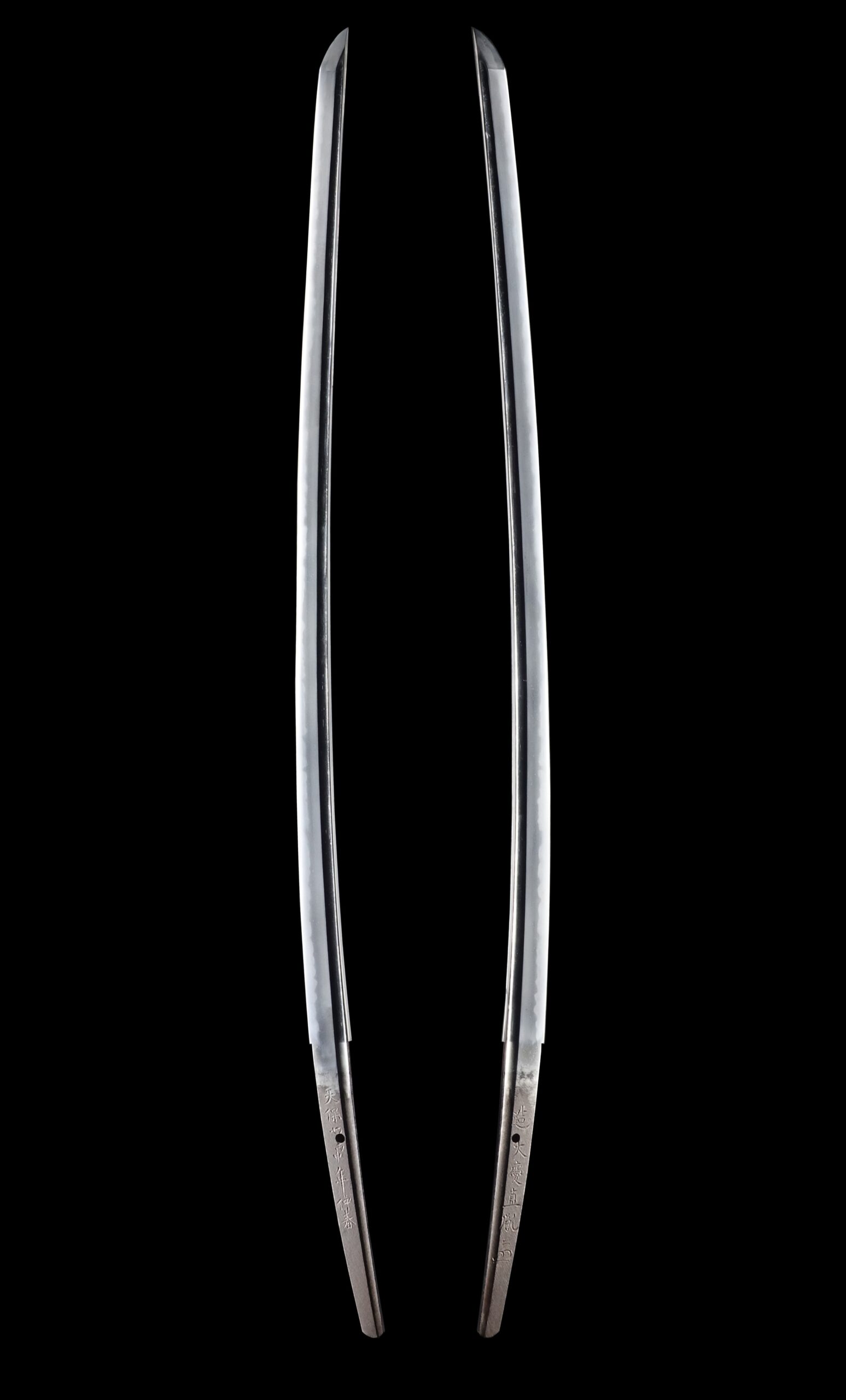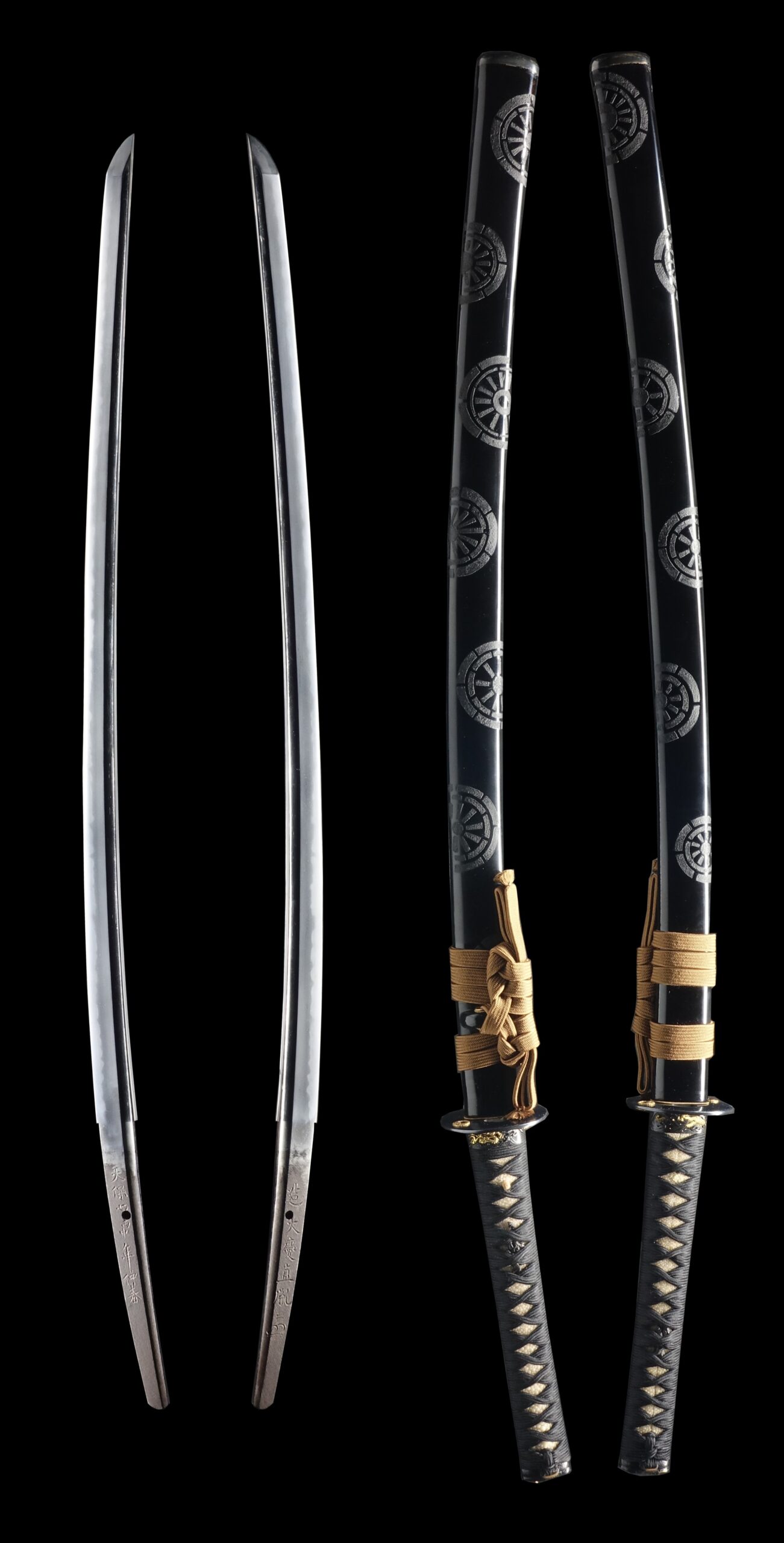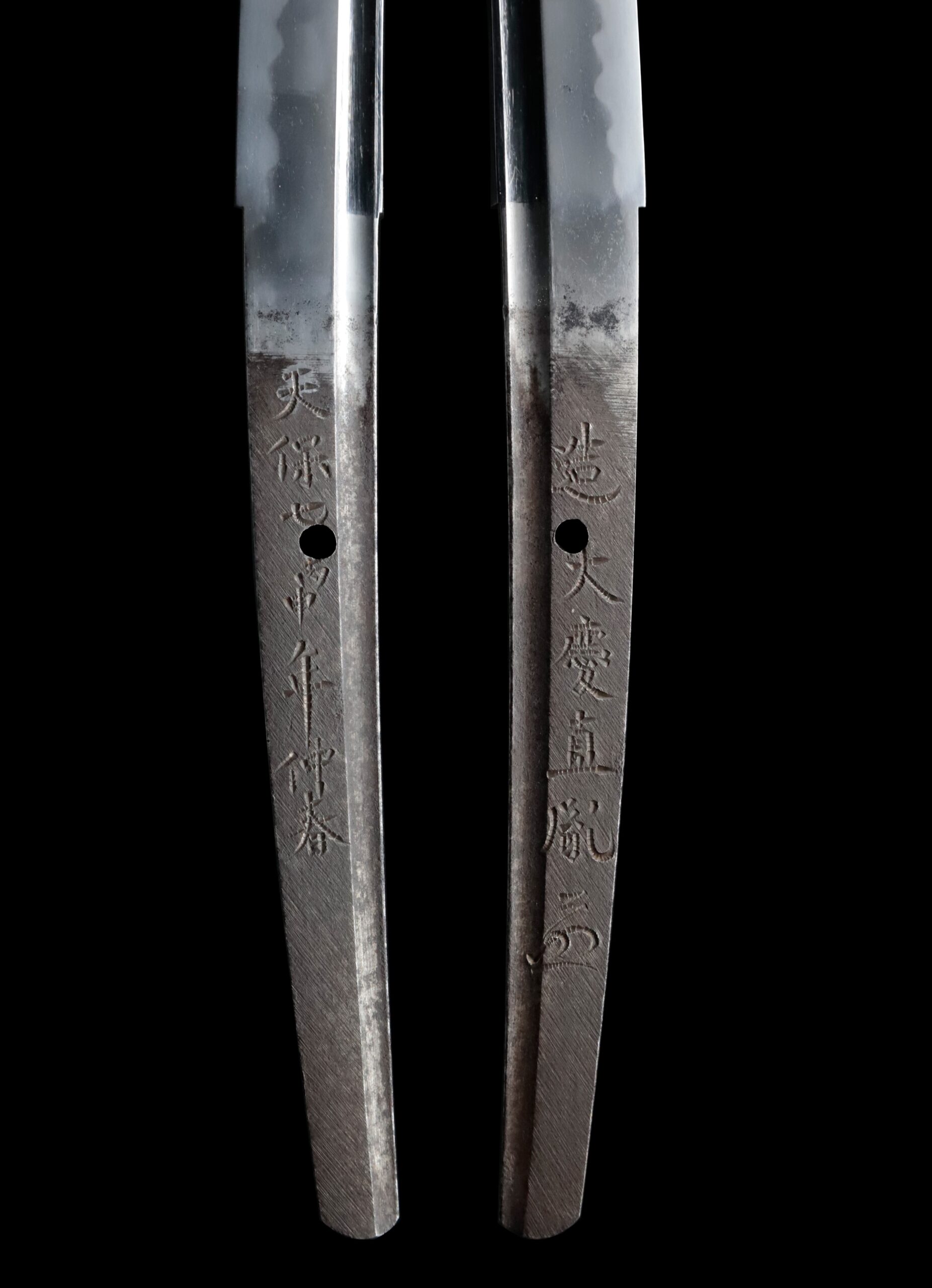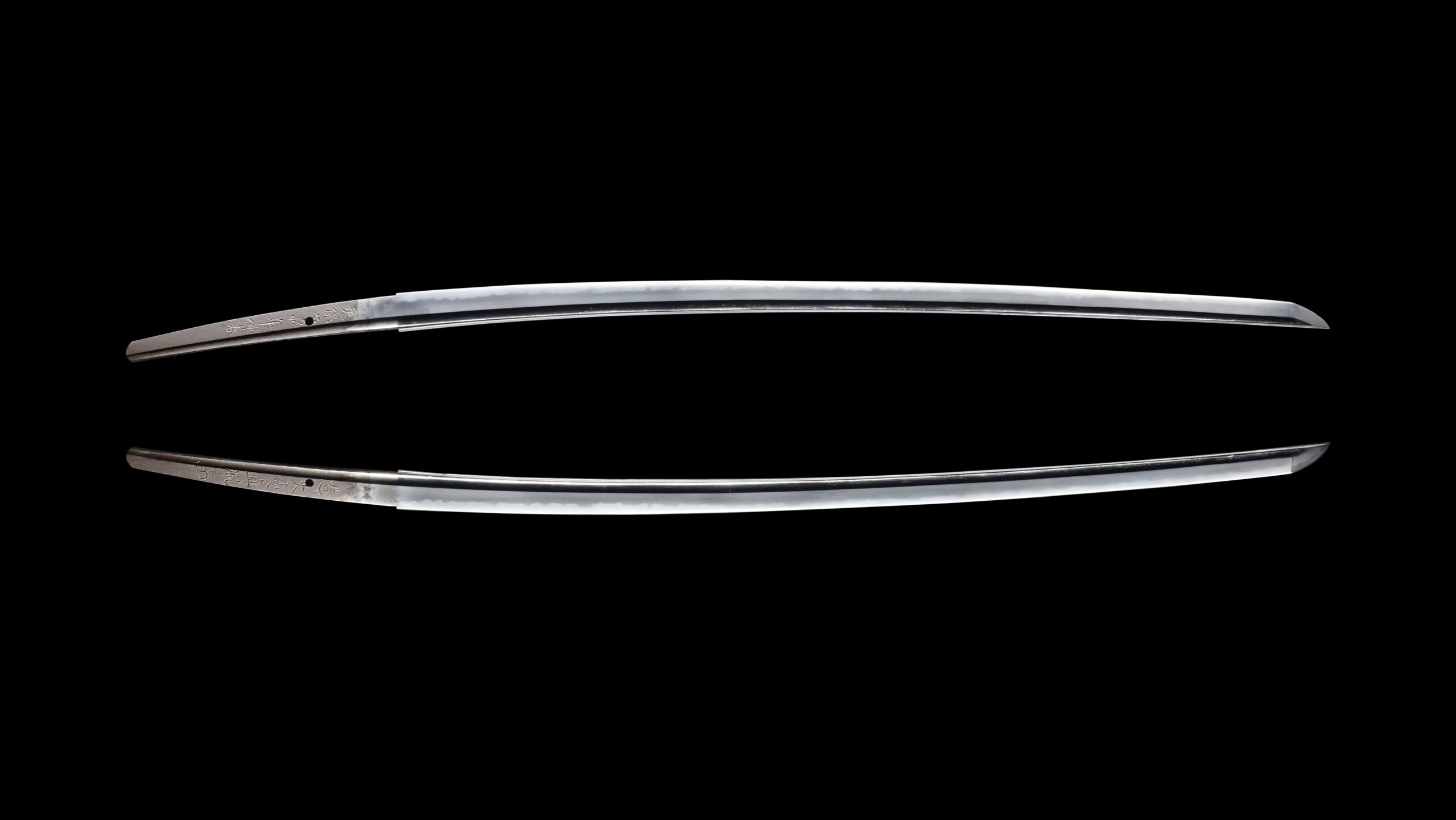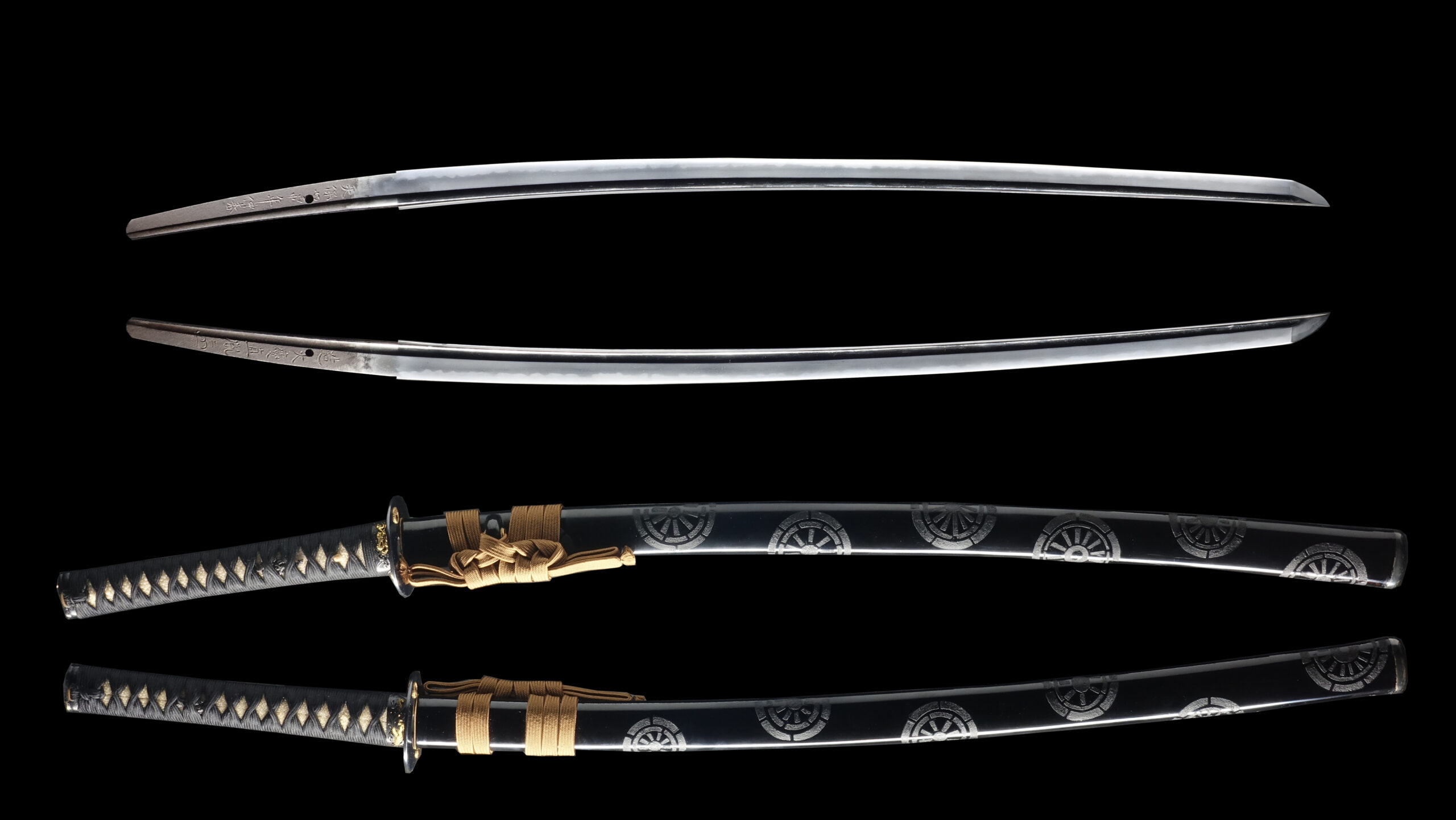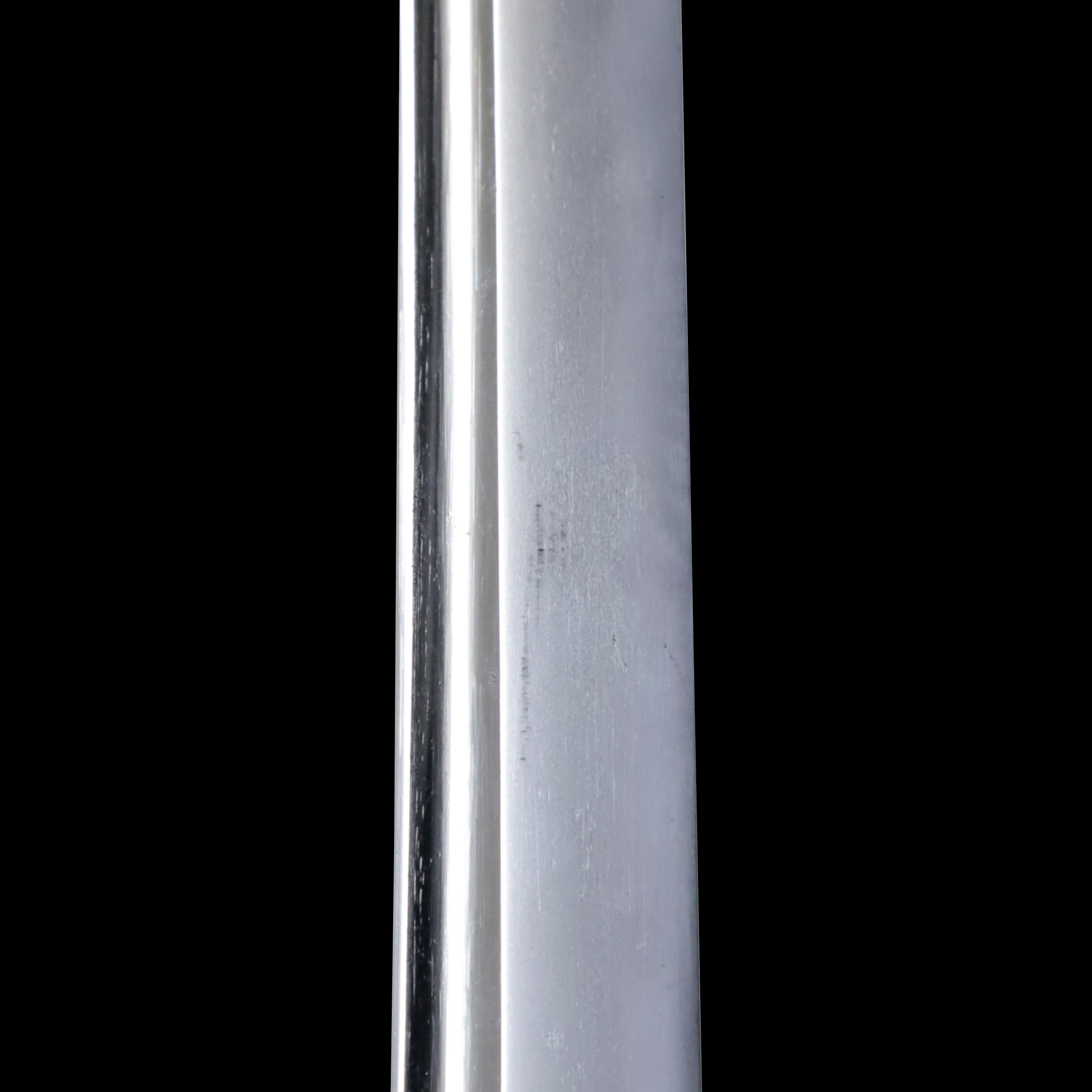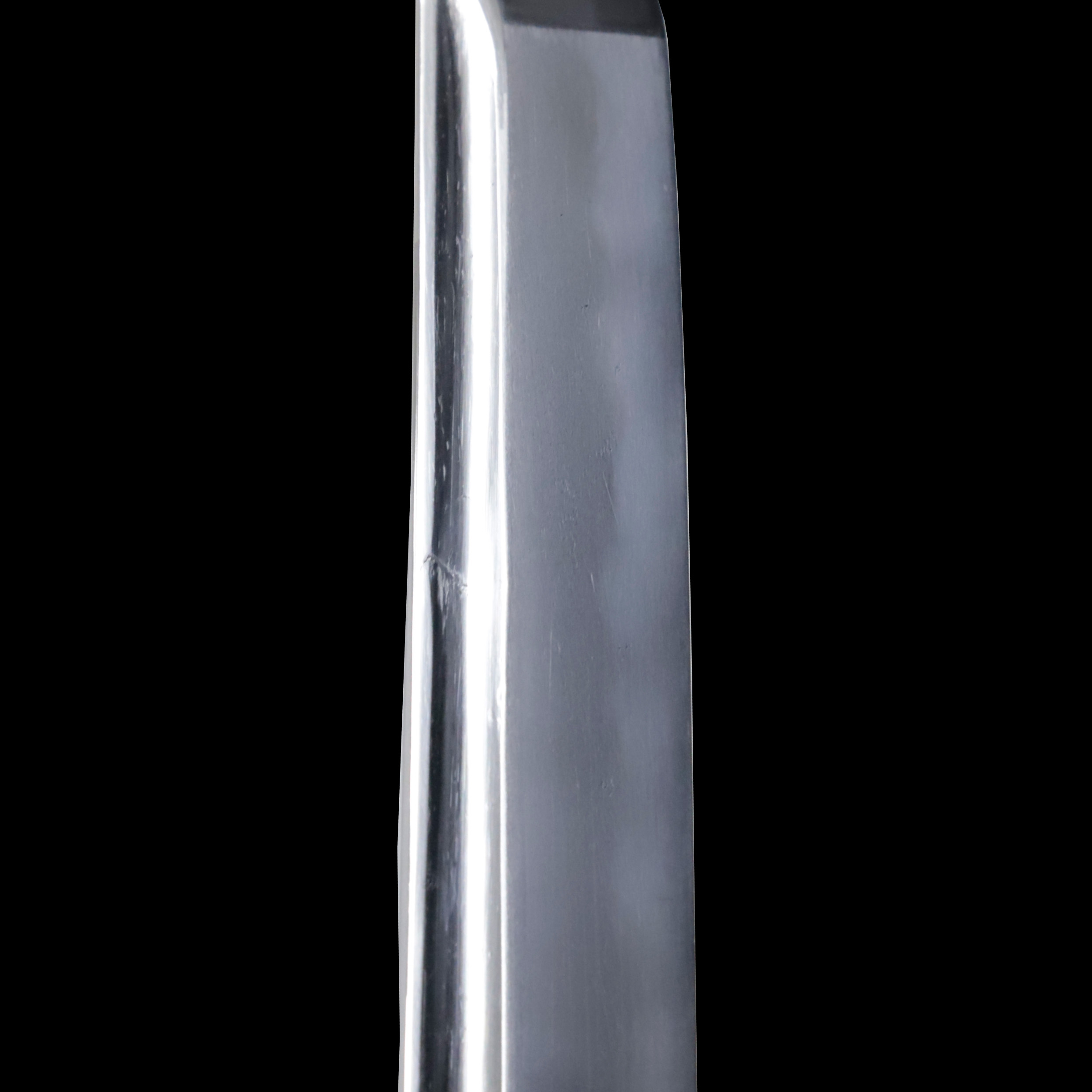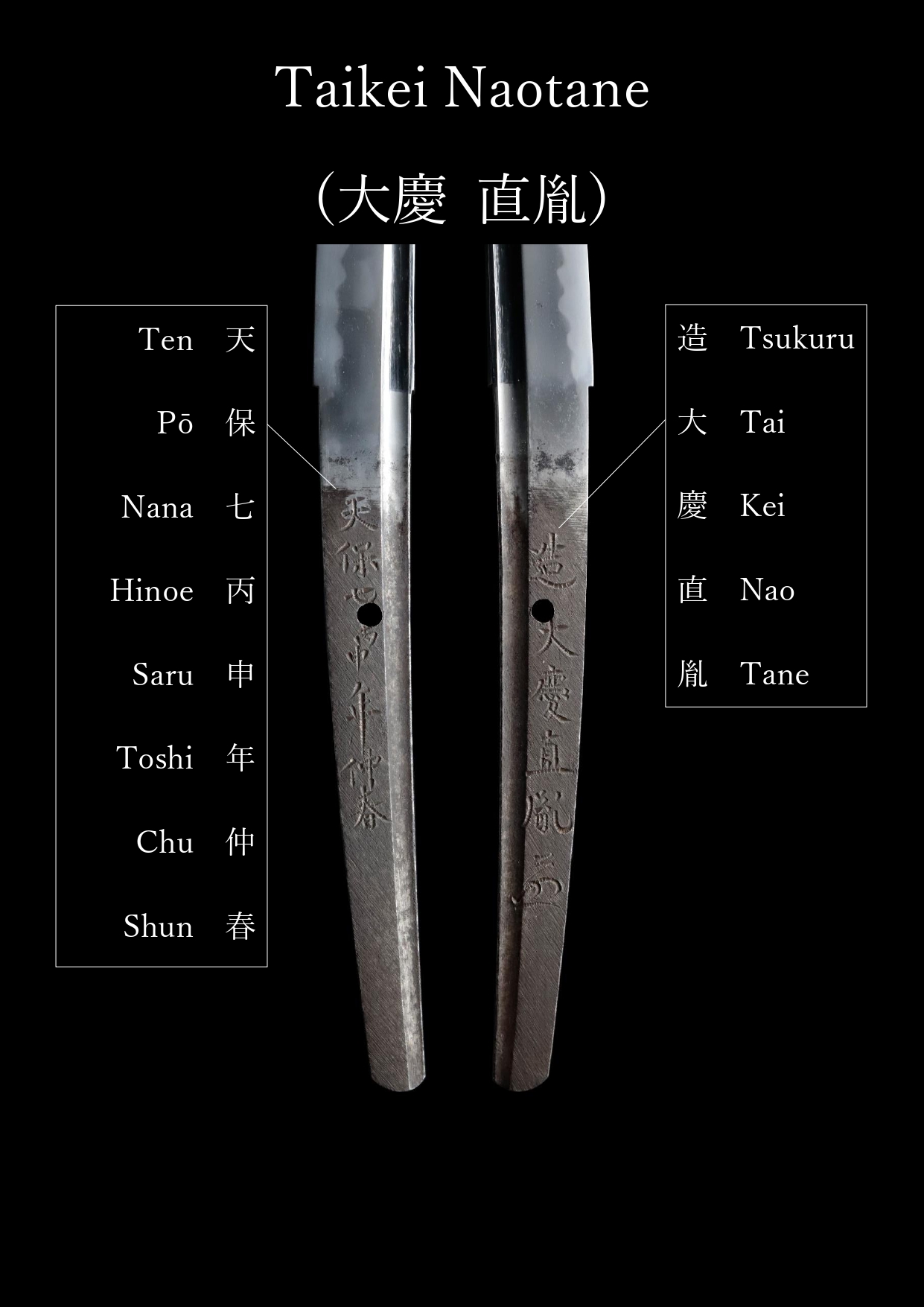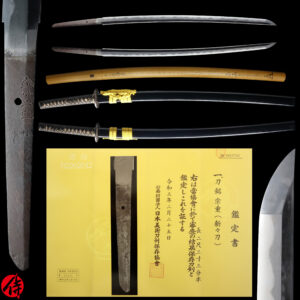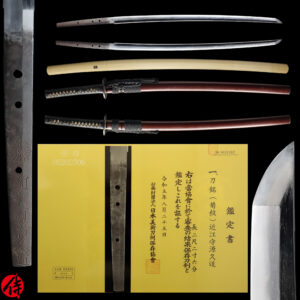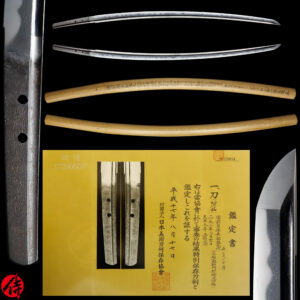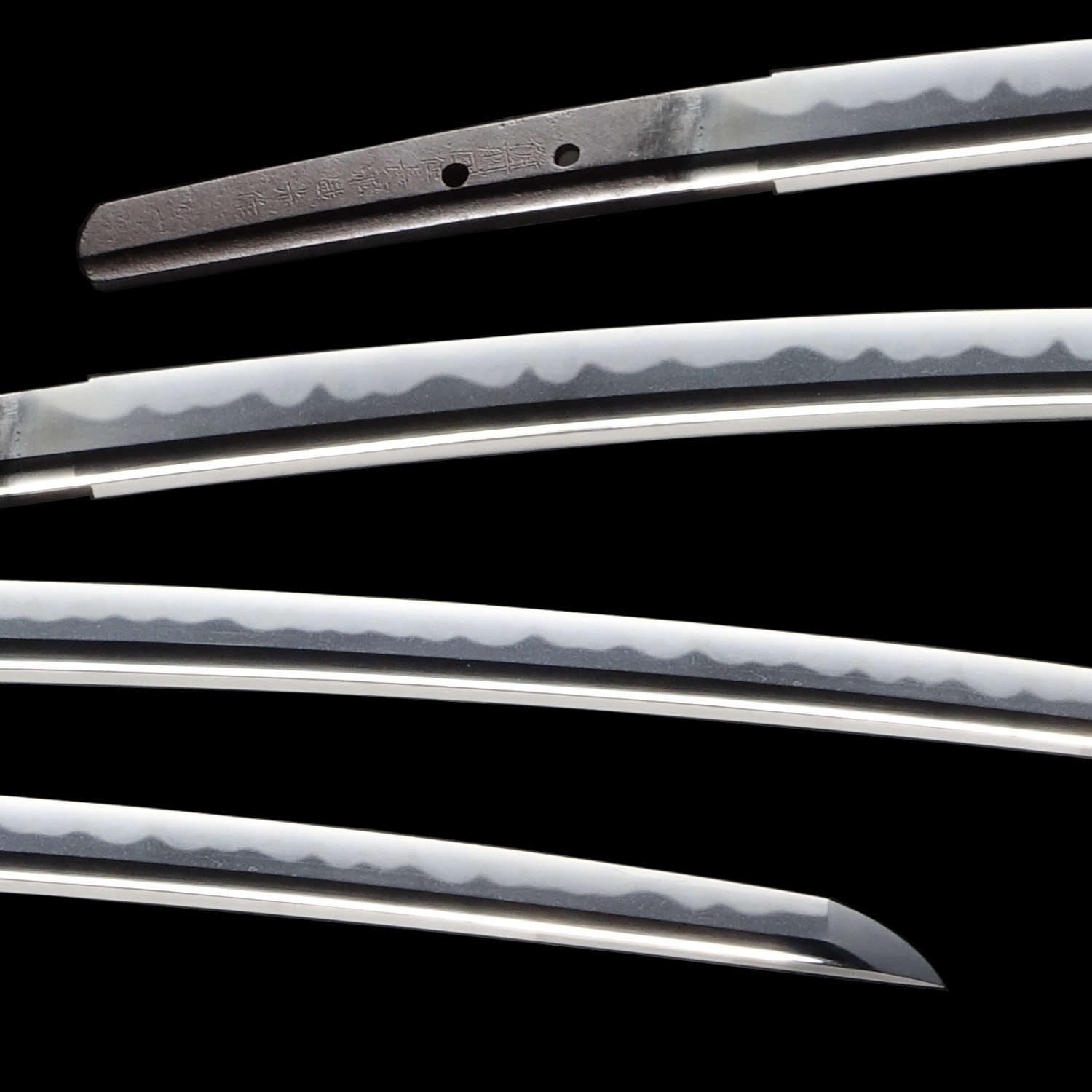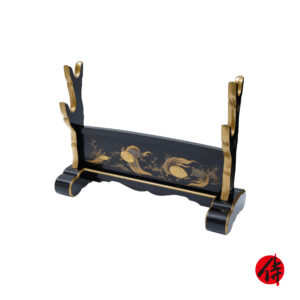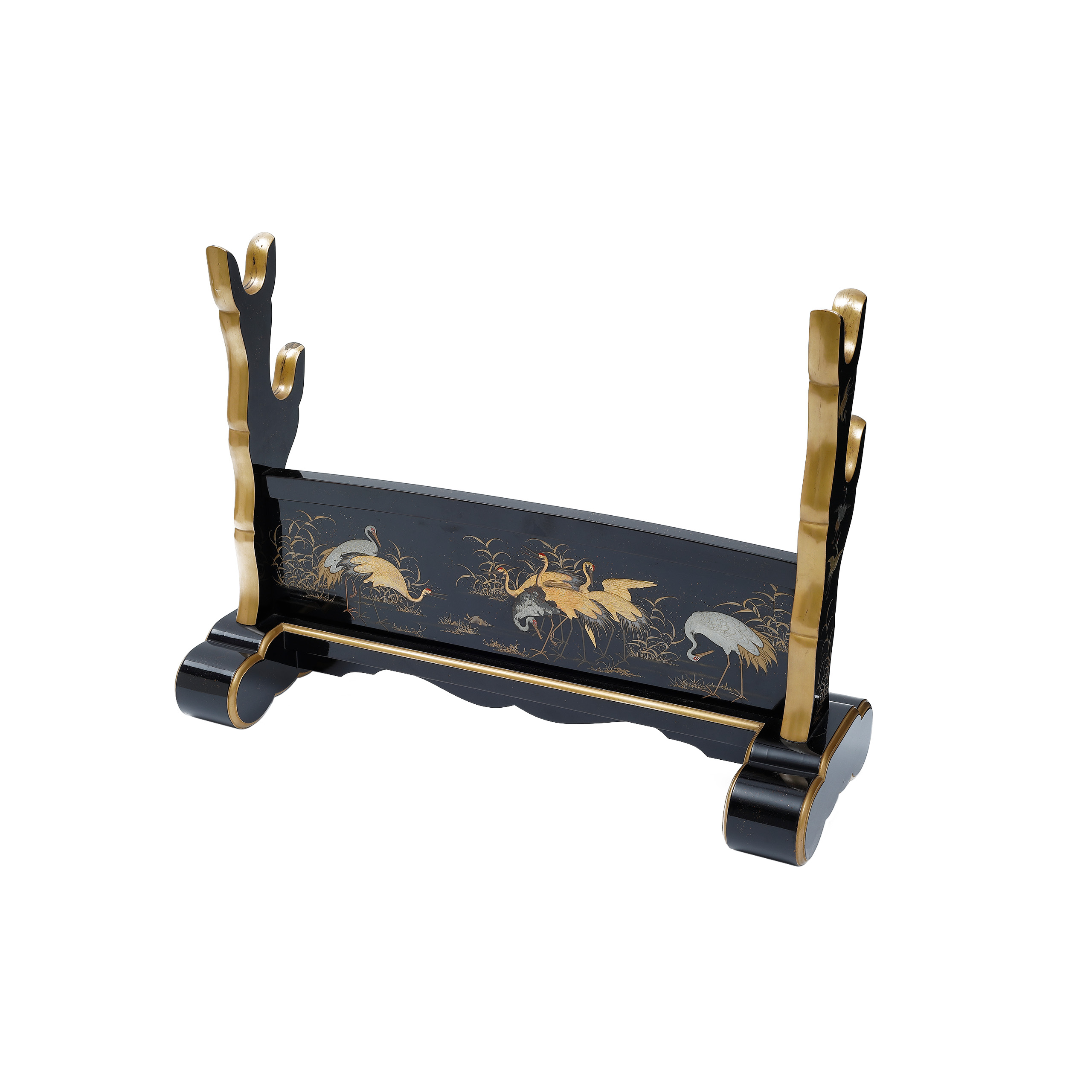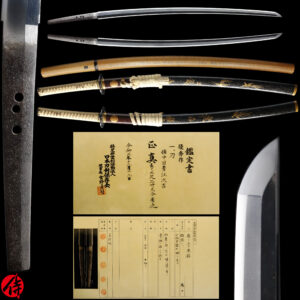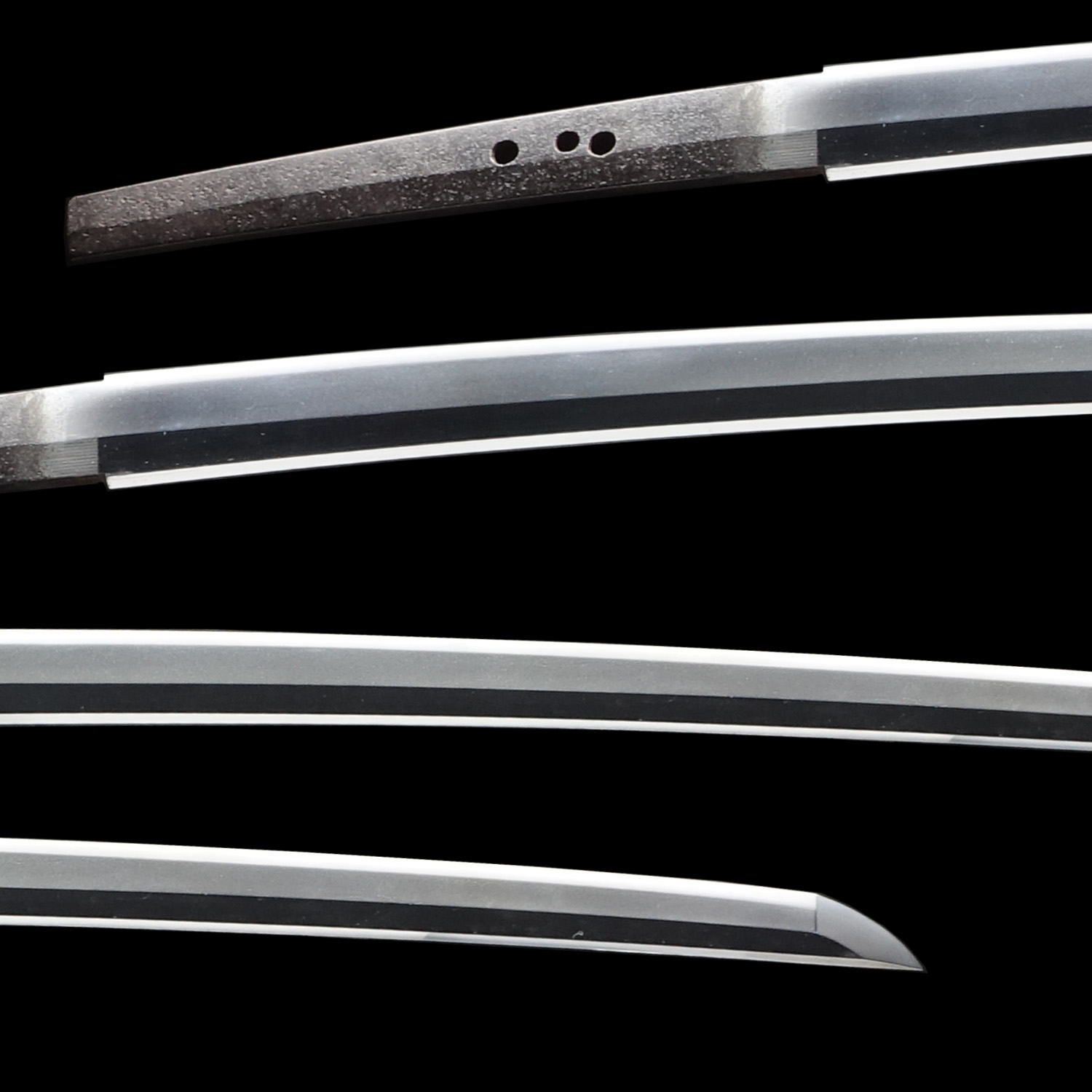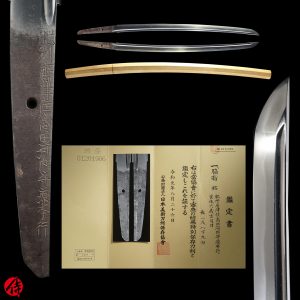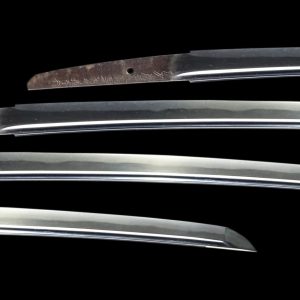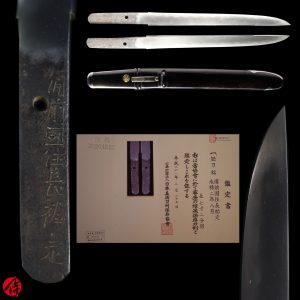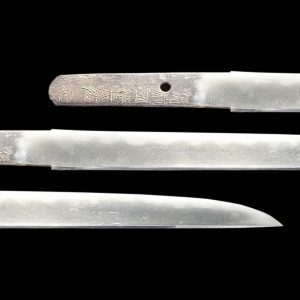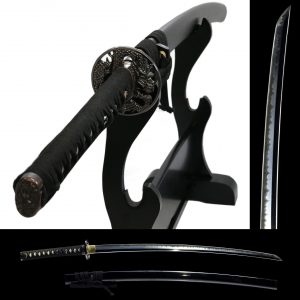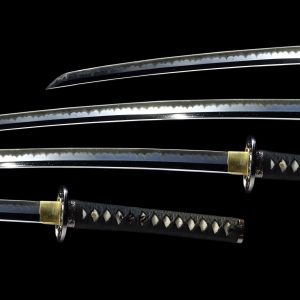Antique Japanese Sword Katana Signed by Naotane with Tokubetsu Hozon Certificate
【Description】
This blade was signed by Taikei Naotane (大慶直胤) in the 7th year of the Tenpo era (1836). Taikei Naotane is considered one of the three most renowned swordsmiths during the late Edo period. The other two are Suishinshi Masahide and Minamoto Kiyomaro. Naotane is also known as Shoji Minobe (荘司箕兵衛), which was his birth name.
Natane was born in the seventh year of the Anei era (1778) into a family that made sickles, a farming tool, for living in Dewa Koku (Today’s Yamagata prefecture). From a younger age, he got interested in becoming a swordsmith while learning blacksmithing skills. During the late Kansei era (1789-1801), he left his hometown and moved to Edo City to become an apprentice for Suishinshi Masahide, one of the most reputable swordsmiths in Edo during that time. He learned excellent craftsmanship from Masahide in a house owned by Akimoto family, which was the head of Dewa Koku.
It is said that Naotane became an independent swordsmith in 1801. He started to serve Akimoto family in 1812 through the introduction from Suishinshi Masahide. And he received the honorable official title of Chikuzen Daijo (筑前大掾) in 1822. In 1848, he visited Kyoto and forged a Tachi blade for Takatsuka family, one of the imperial lineage, and received another title called Minosuke (美濃介). The more Naotane gained fame, the more often he was invited by a feudal lord or high-class Samurai in other provinces to forge blades. He created swords nationwide in his late career.
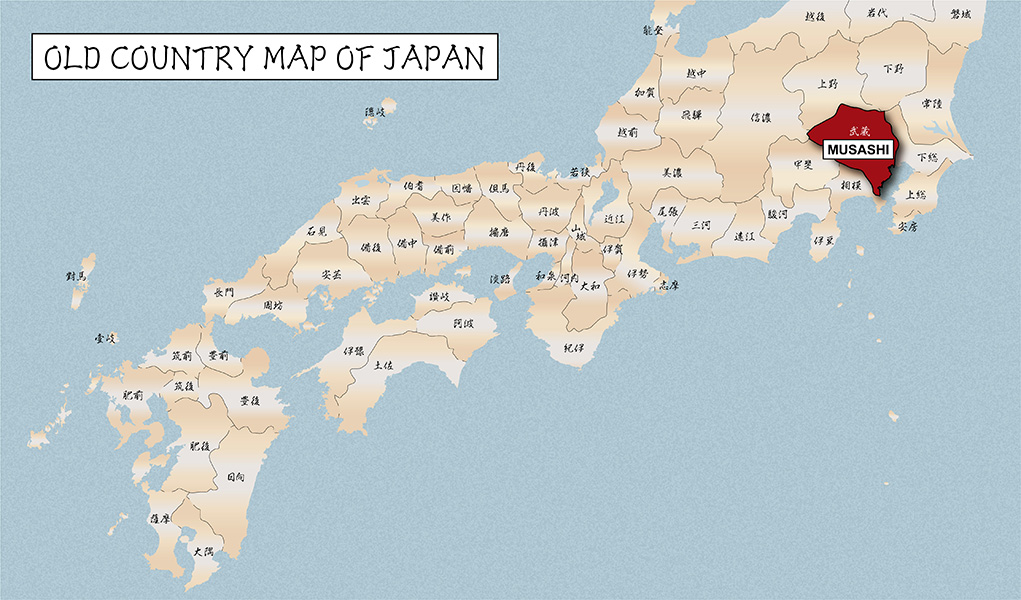
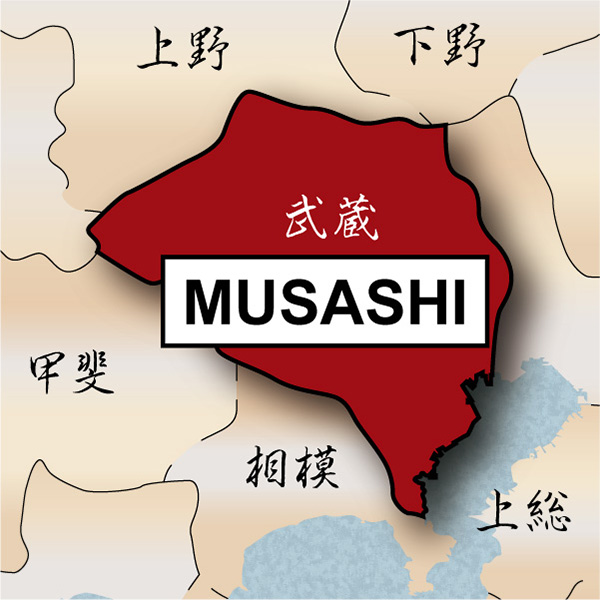
The works of Naotane have been highly appreciated because he played an essential role in Japanese sword history at the end of the Edo period. It is said that he mastered all the five Japanese sword traditions called Gokaten (五箇伝). They are Bizen DEN, Mino Den, Soshu Den, Yamashiro Den and Yamato Den. It is said that he was especially excellent at Bizen and Soshu Den.
His master, Suishinshi Masahide, was the proponent of revitalizing old sword-forging traditions. This movement is called Token Futsuko Ron (刀剣復古論). Naotane followed suit and mastered superb craftsmanship. Natotane trained many famous swordsmiths, and one of them was Jiro Taro Naokatsu, who was active during 1805-1858. Naotane died at the age of 79 in 1857.
It is appraised as a Tokubetsu Hozon Touken (特別保存刀剣) issued by NBTHK (Nihon Bijutsu Touken Hozon Kyokai: 日本美術刀剣保存協会). This authentication paper was only given to authentic Japanese swords, especially well preserved and high quality with artistic value.
*Please keep in mind that there are a couple of visible Kitae Kizu on this blade. If you like to know the detailed condition, please feel free to contact us. We will send you additional images.
【 Blade】
Cutting Edge Length (Nagasa): 68.0 cm (27.8 inches)
Curvature (Sori): 1.6 cm (0.82 inches)

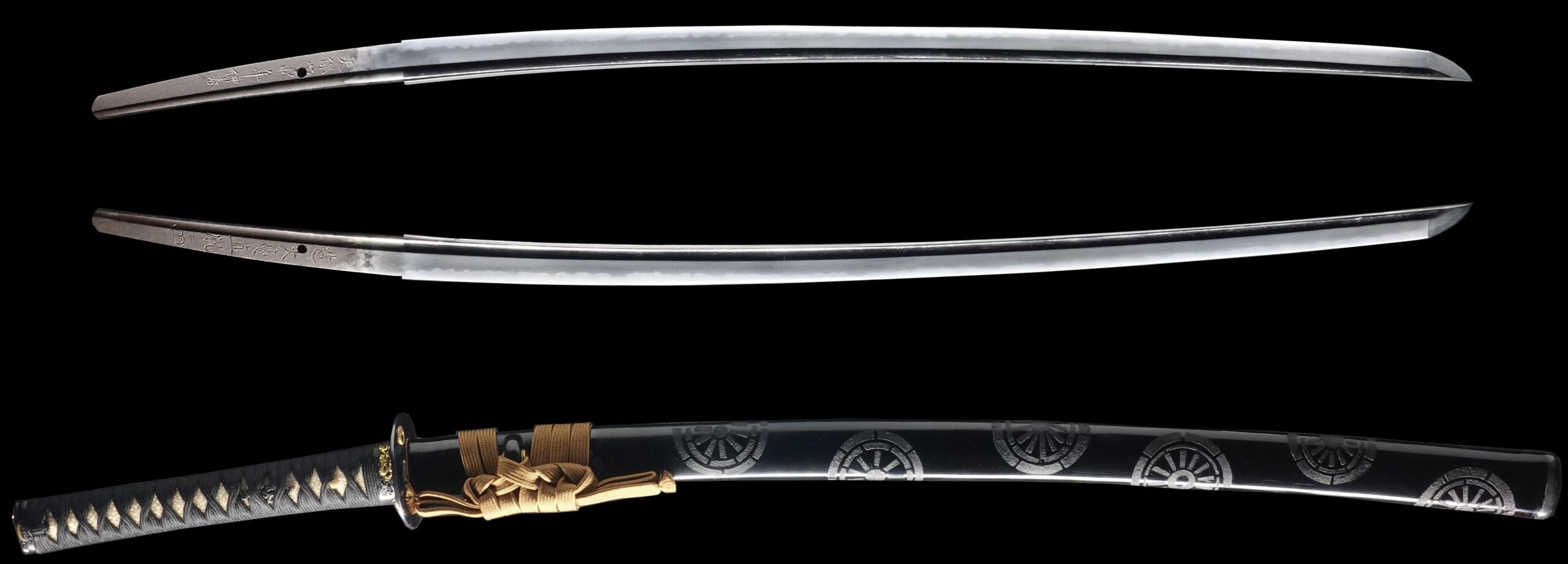
Hamon:
the crystalline structure which forms along the cutting edge of a blade as a result of the hardening process
Jimon(Jihada):
visible steel surface pattern created by folding and hammering during forging process
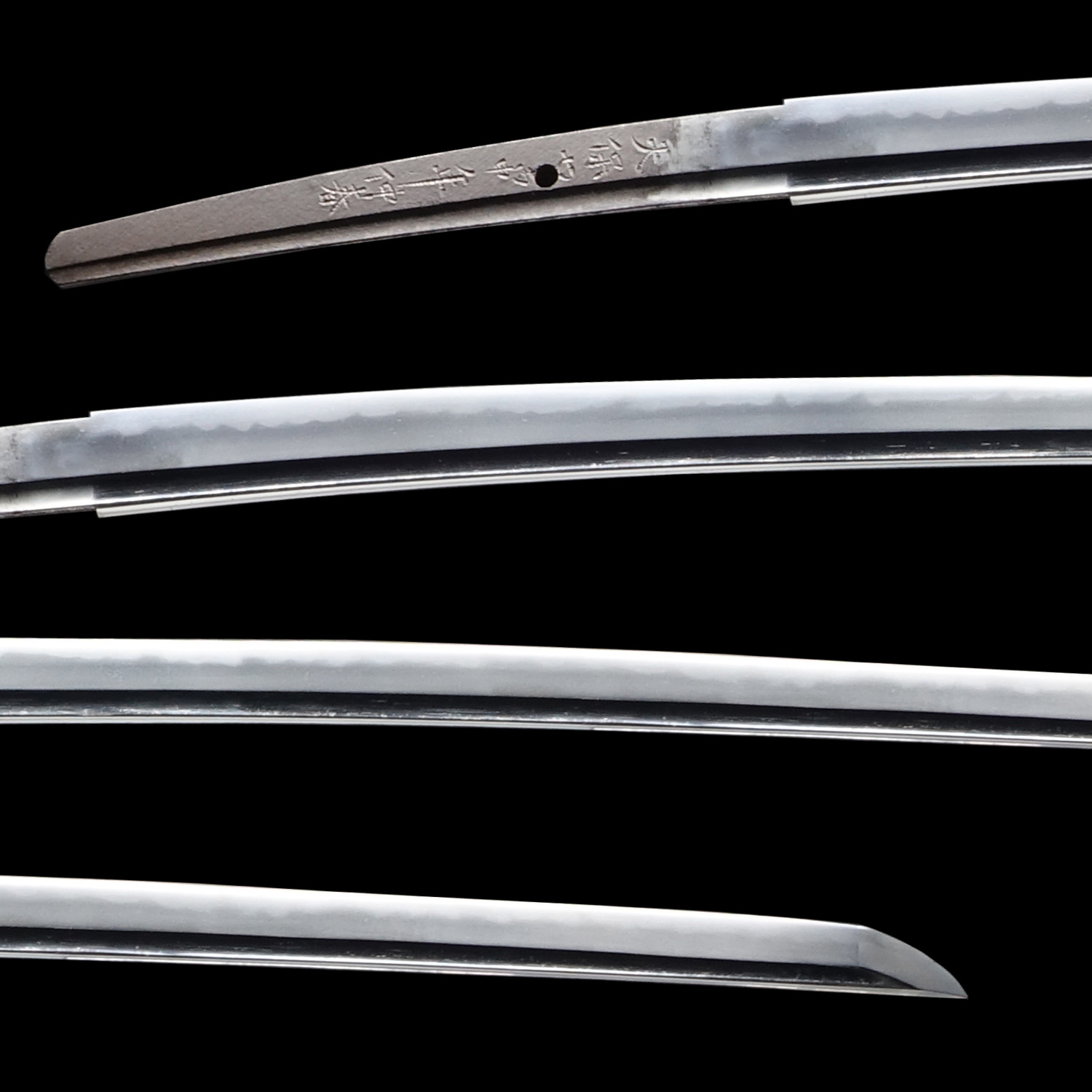
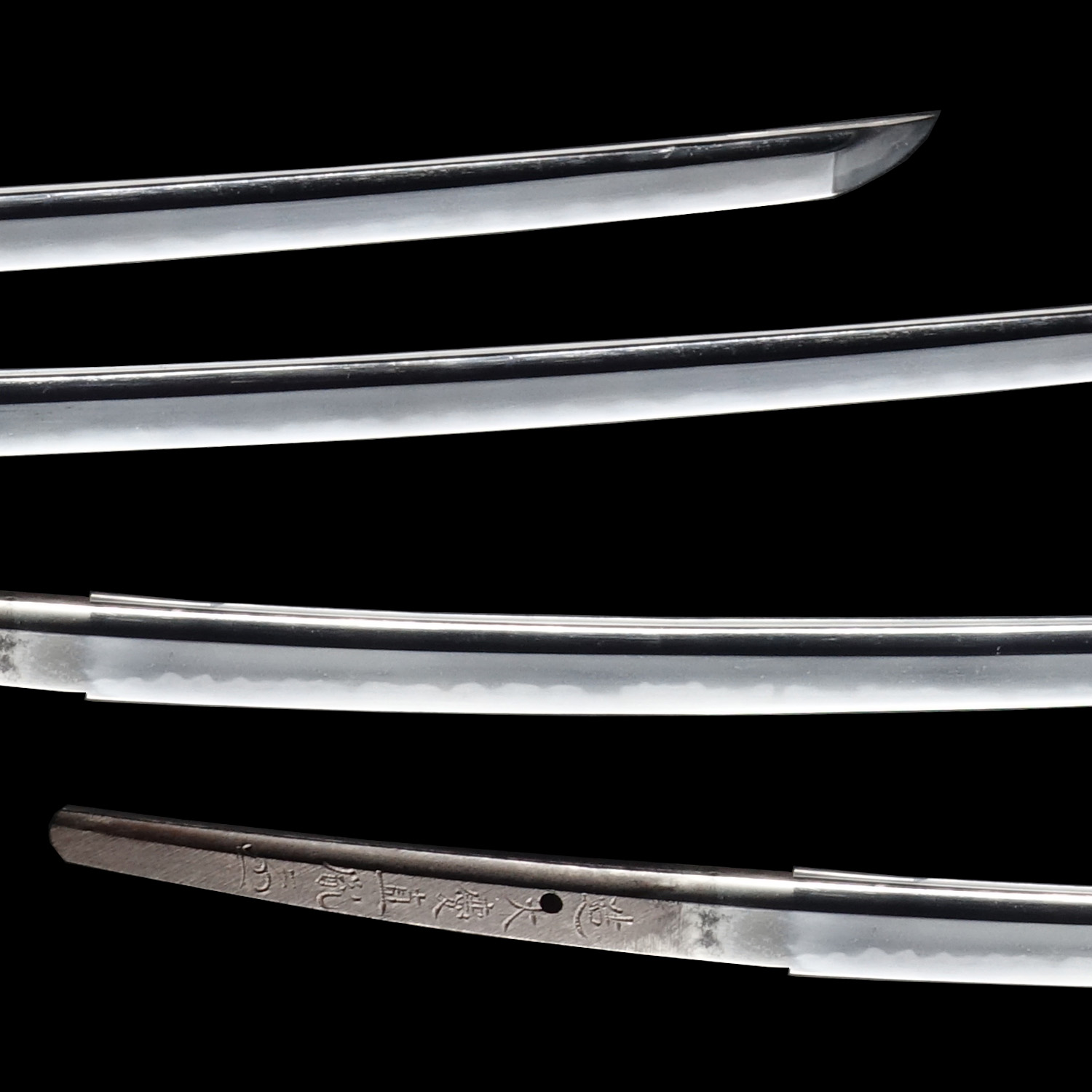
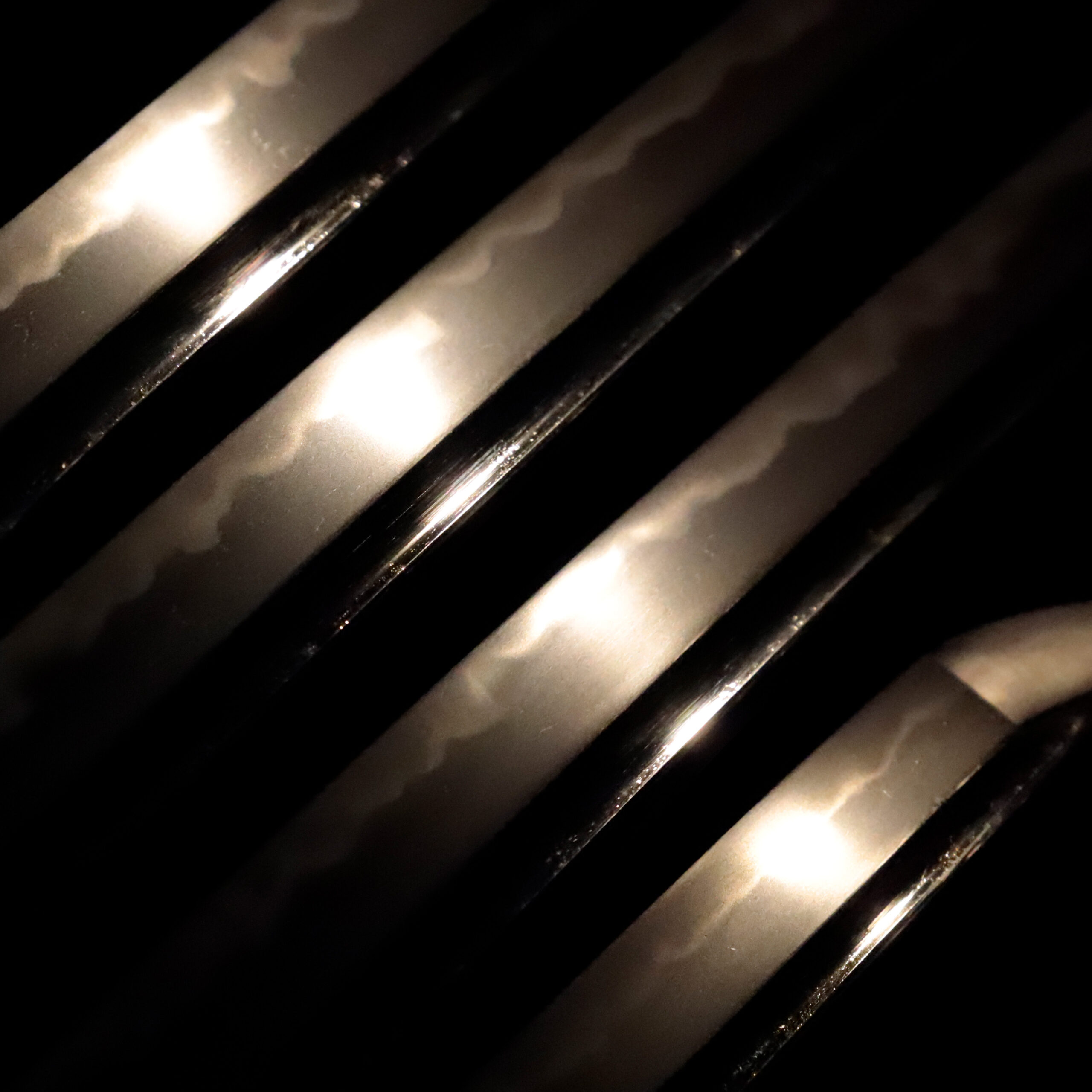
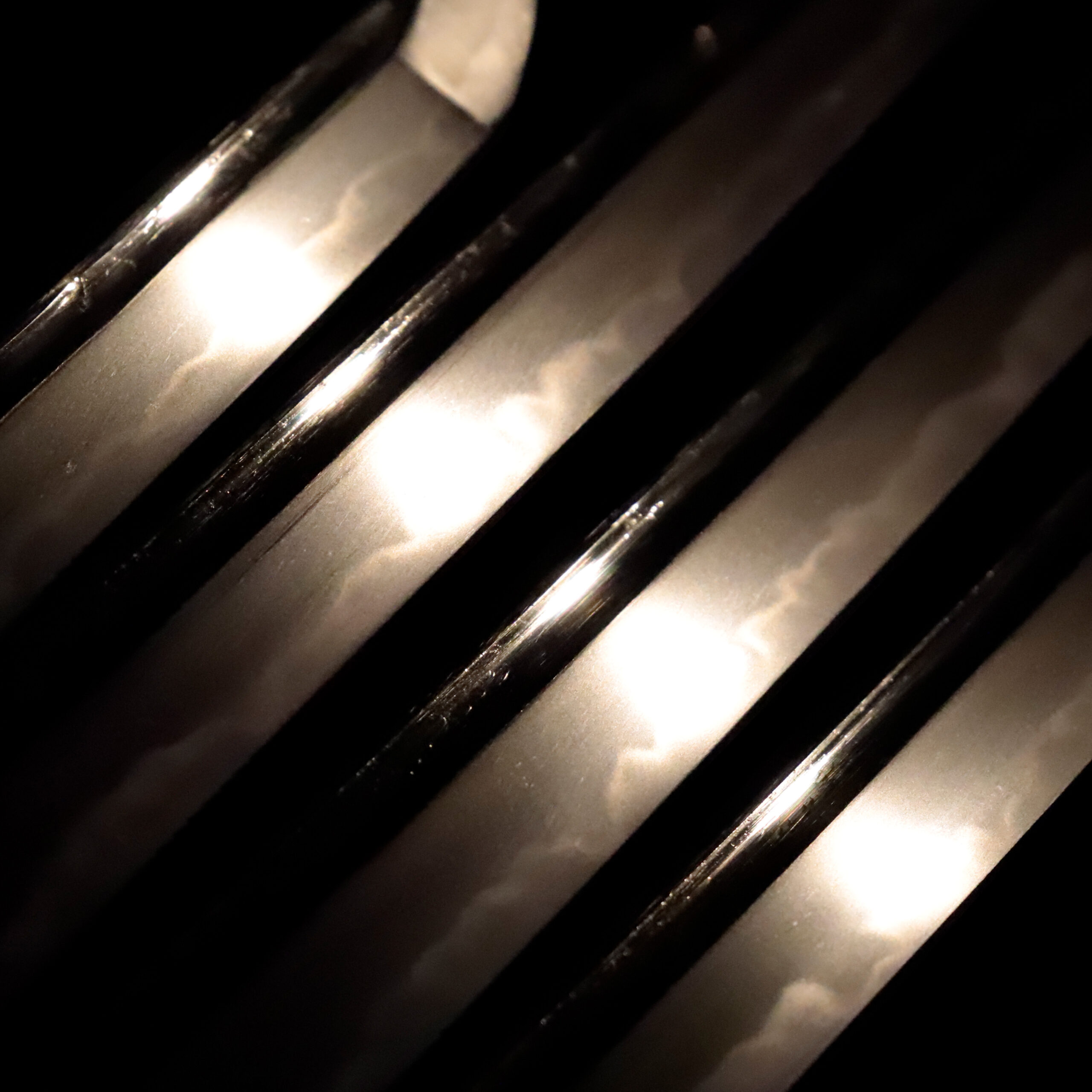
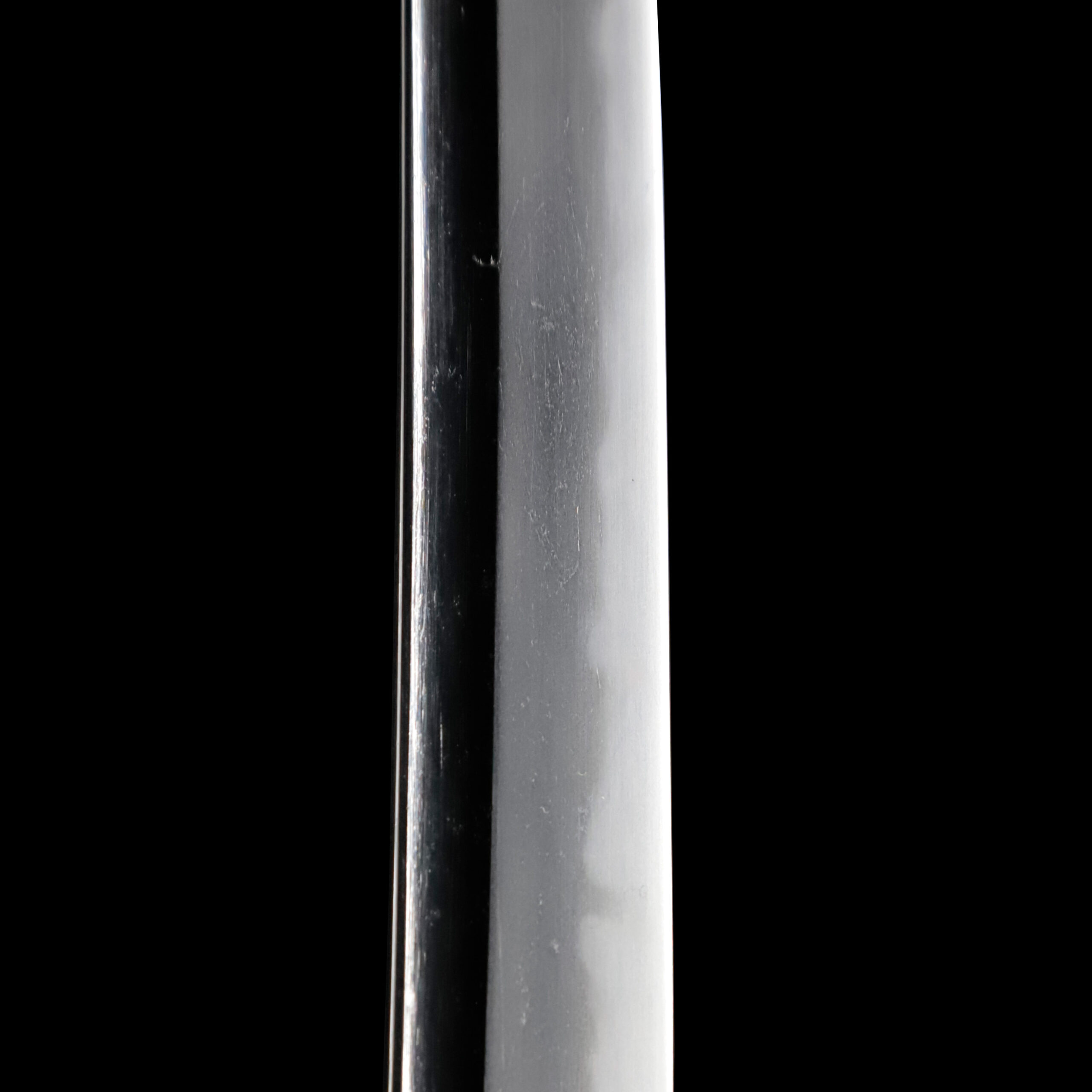
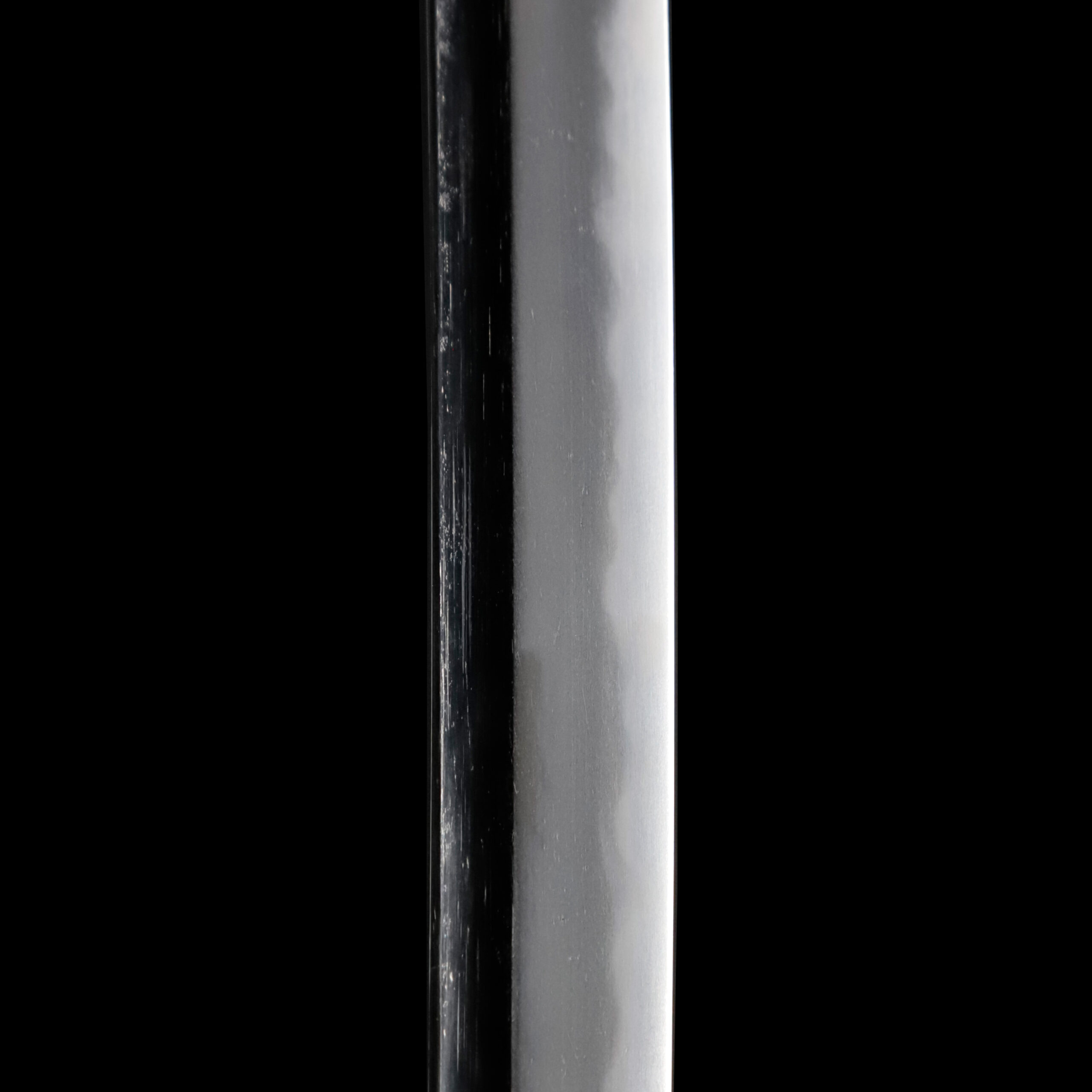
Kissaki: Kissaki is the tip of the Japanese sword.
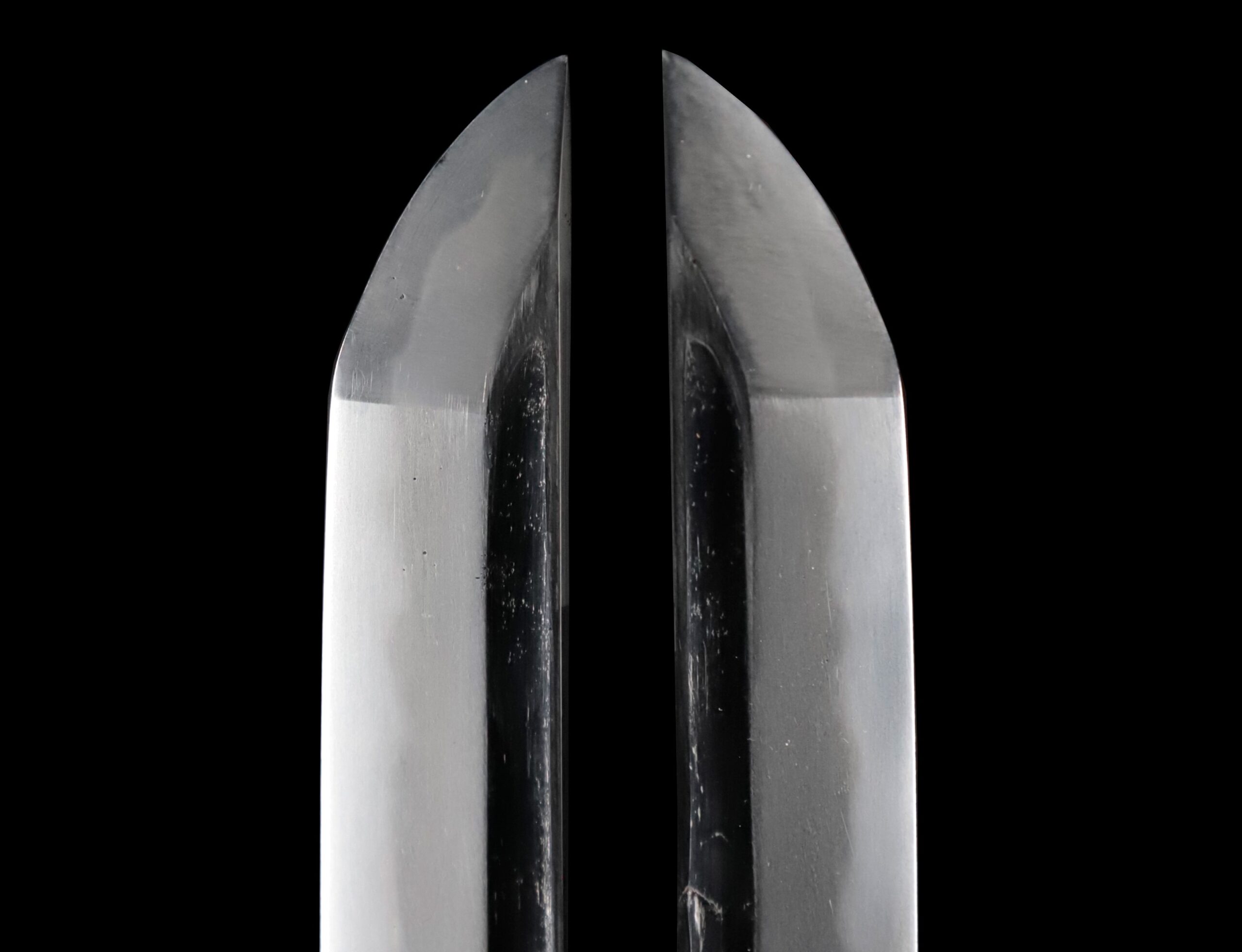
Nakago: Nakago is the tang of the Japanese sword.
Japanese swordsmiths left the black rust on the tang because it prevents red rust while the tang is in its handle. And the discoloration of the tang was created over time, and it is a great indicator for a Japanese sword specialist to estimate when the sword was forged.
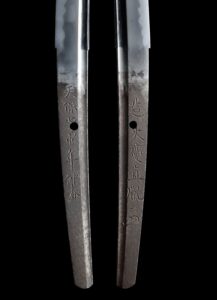
Koshirae: Koshirae is the mounting of the Japanese sword. There are several parts that consist of Koshirae such as Saya (Scabbard), Tsuka (Handle), Tsuba (Handguard).
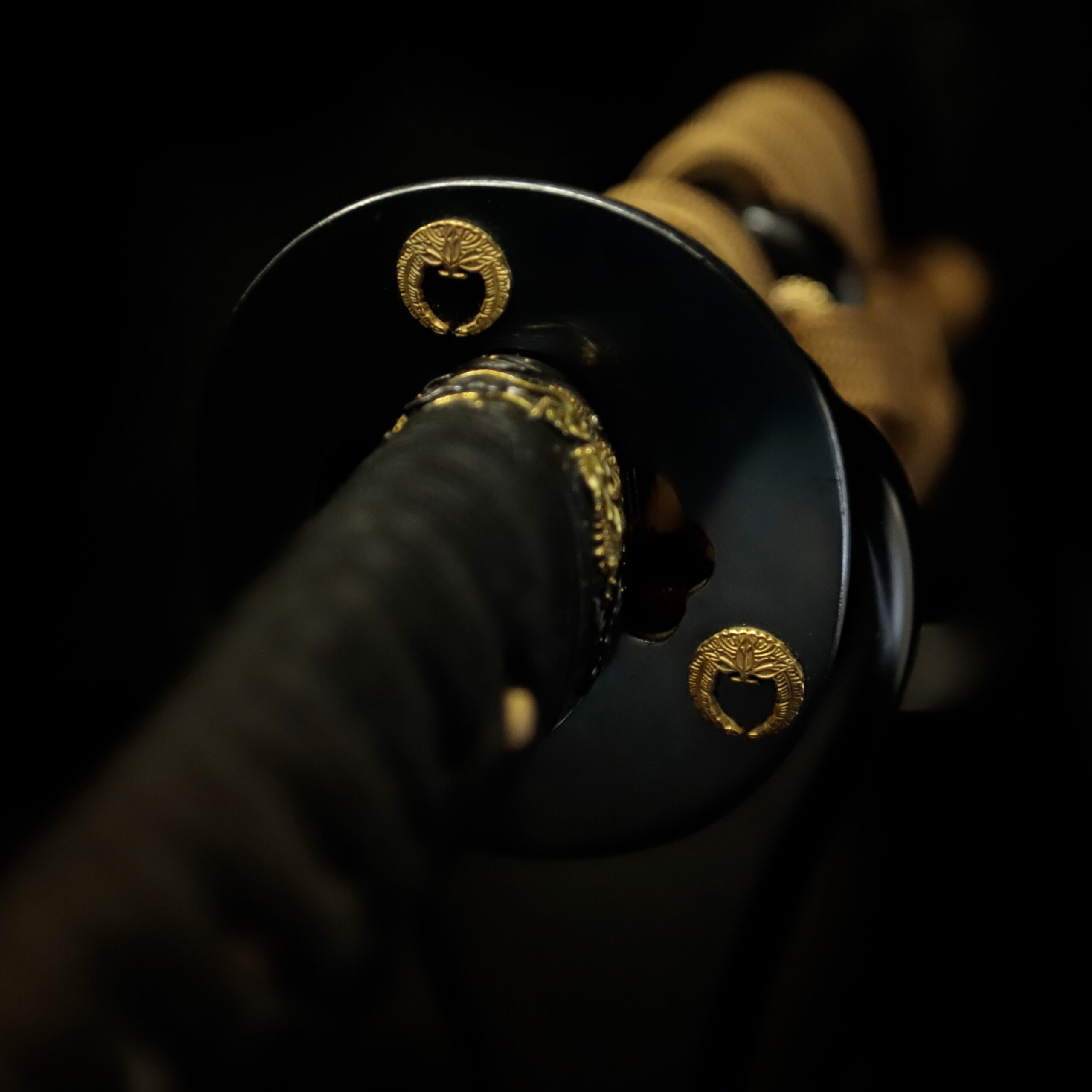
Fuchi-Kashira: A pair of matching sword fittings that cover the upper and bottom parts of its sword hilt.
The sword mountings of this handle have the same beast motif. On this Fuchi Kashira, you would find the two types of dragons’ figures. On the Fuchi part, the dragon is swimming in the water. On the other hand, the figure of a flying dragon peeks out from between the clouds. In this way, we often find designs that combine dragons and, water, and clouds. We estimate it is because this creature is an imaginary beast related to religious ideas.
Initially, dragons were imaginary creatures found in ancient foreign traditions or myths. Furthermore, it is regarded as a symbol of auspicious signs. Its body is likened to nine animals: antlers are deer, the head is a camel, eyes are demons, the neck is a snake, the belly is the Mizuchi (蛟, a mythical animal in Japan that looks like a snake and has a horn and four legs), scales are fish, claws are falcons, palms are tigers, and ears are cows. It was thought that the dragon would reign at the top of all animals because of its odd-looking appearance.
Regarding an aspect of the religious idea of dragons, a belief worships dragons as water gods in Japan. Clouds bring rain and snow, and their movements significantly affect the day’s weather. Due to its supernatural power, a theory says that gods, spirits, and dragons dwell in the clouds. Since rice cultivation has flourished in this country, water has always been an essential resource. Therefore, the dragon motif has been familiar to Japanese people for a long time. In this way, we think dragon designs have been cherished for their dignified appearances and auspicious meanings.
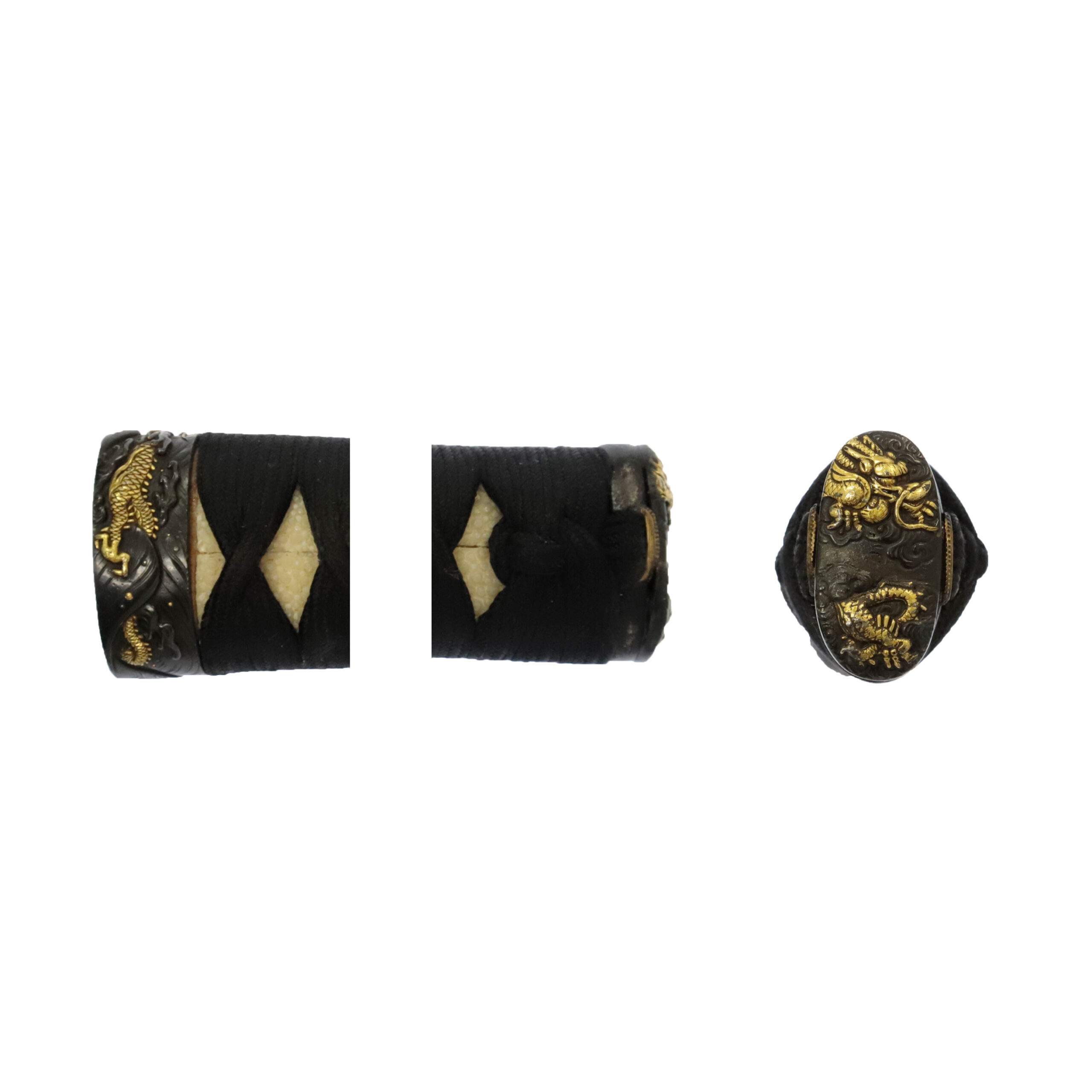
Tsuka and Menuki: Tsuka is the handle of the Japanese sword and Menuki is its decoration.
While we cannot see the entire shape and details of each Menuki, it seems dragons are the motifs. Unlike the Fuchi Kashira mentioned above, there is no golden coloring. If you focus on the upper side Menuki’s dragon’s hand, you will find that it brings a ball-shaped object in its hand. This item is the Nyoi Houju (如意宝珠, Cintāmaṇi), a fantasy jewel that fulfills any desire and gives out treasure, clothes, food, and drinks. Moreover, it heals illness and suffering, removes evils, purifies muddy water, and prevents disasters. It is said this magical item is taken from the brain of the dragon king.
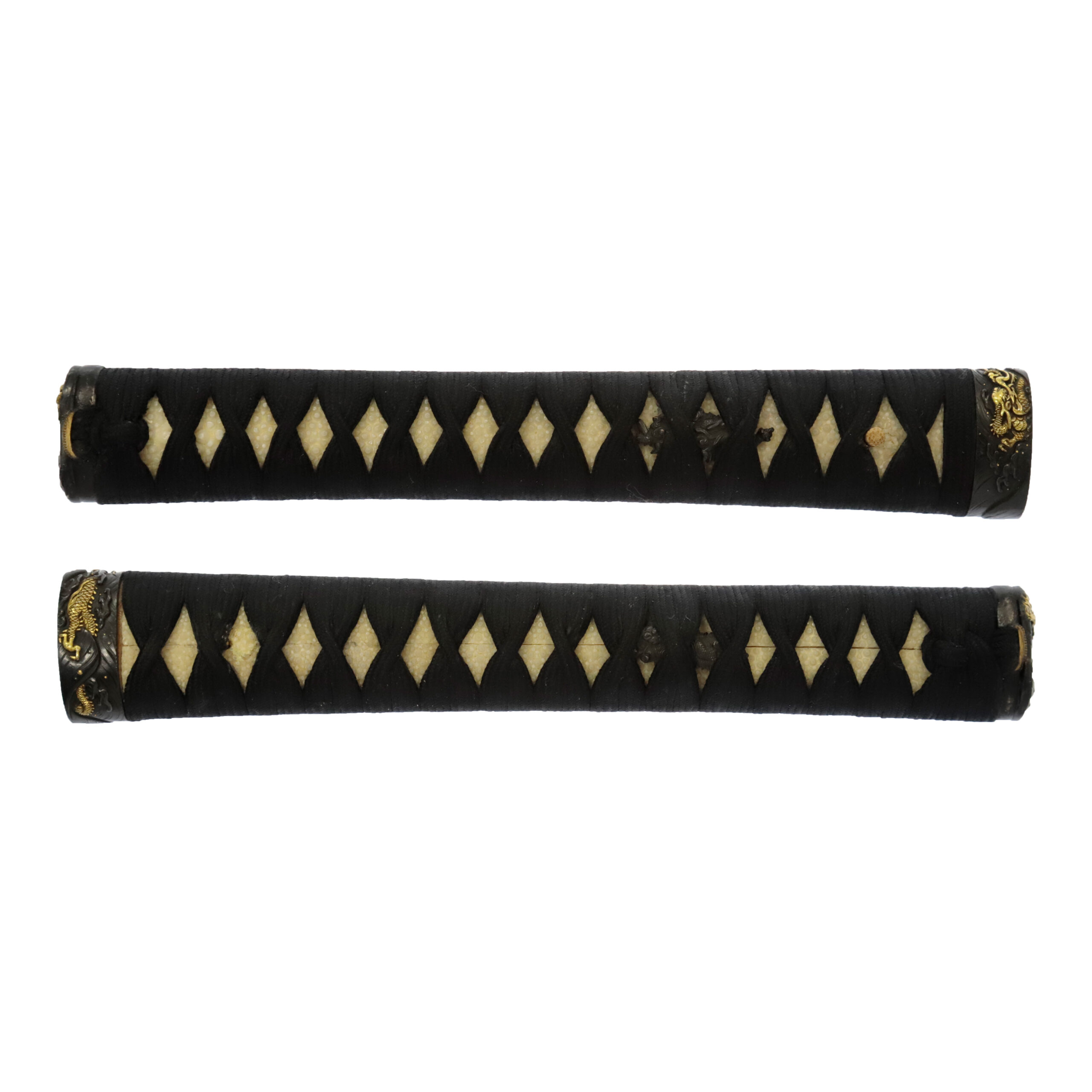
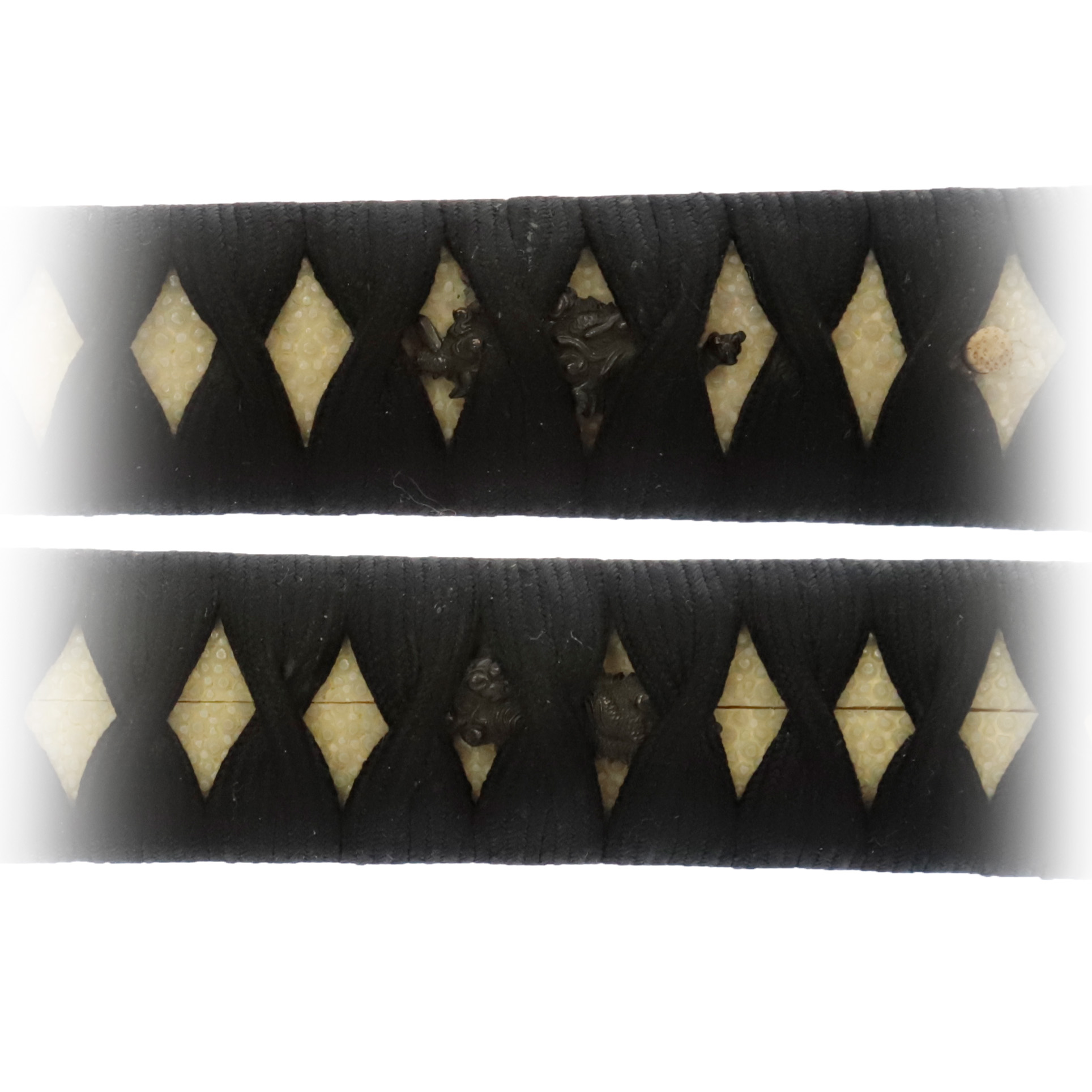
Tsuba and Habaki: Tsuba is the handguard for the Japanese Sword and Habaki is the equipment to make the blade not touch its scabbard inside. It prevents the blade from getting rusty and chipped.
You would find that the same family crests are designed on this Tsuba. We believe these family crests came from a Fuji (藤, wisteria) pattern called the Sagari-Fuji (下り藤). It depicts a round shape of a wisteria flower cluster hanging down. Since wisterias have strong fertility and grow being entwined with other trees, people regarded this flower as a symbol of longevity and prosperity for future generations.
Also, its Japanese name, Fuji (藤), is likened to another word, Fushi (不死), which means immortality. According to a theory, that is why the Fujiwara (藤原) family, who reached the height of glory in the Heian period (794-1185), used this motif for their family name and family crest. It is said there were Samurai families who used Fuji-designed family crests due to the admiration of the Fujiwara clan, which once occupied most of the upper aristocrats. Also, it might be because they wanted to share the prosperity of the Fujiwara clan. Although we cannot say for sure, this trend possibly influenced the Sagari-Fuji pattern of this Tsuba.
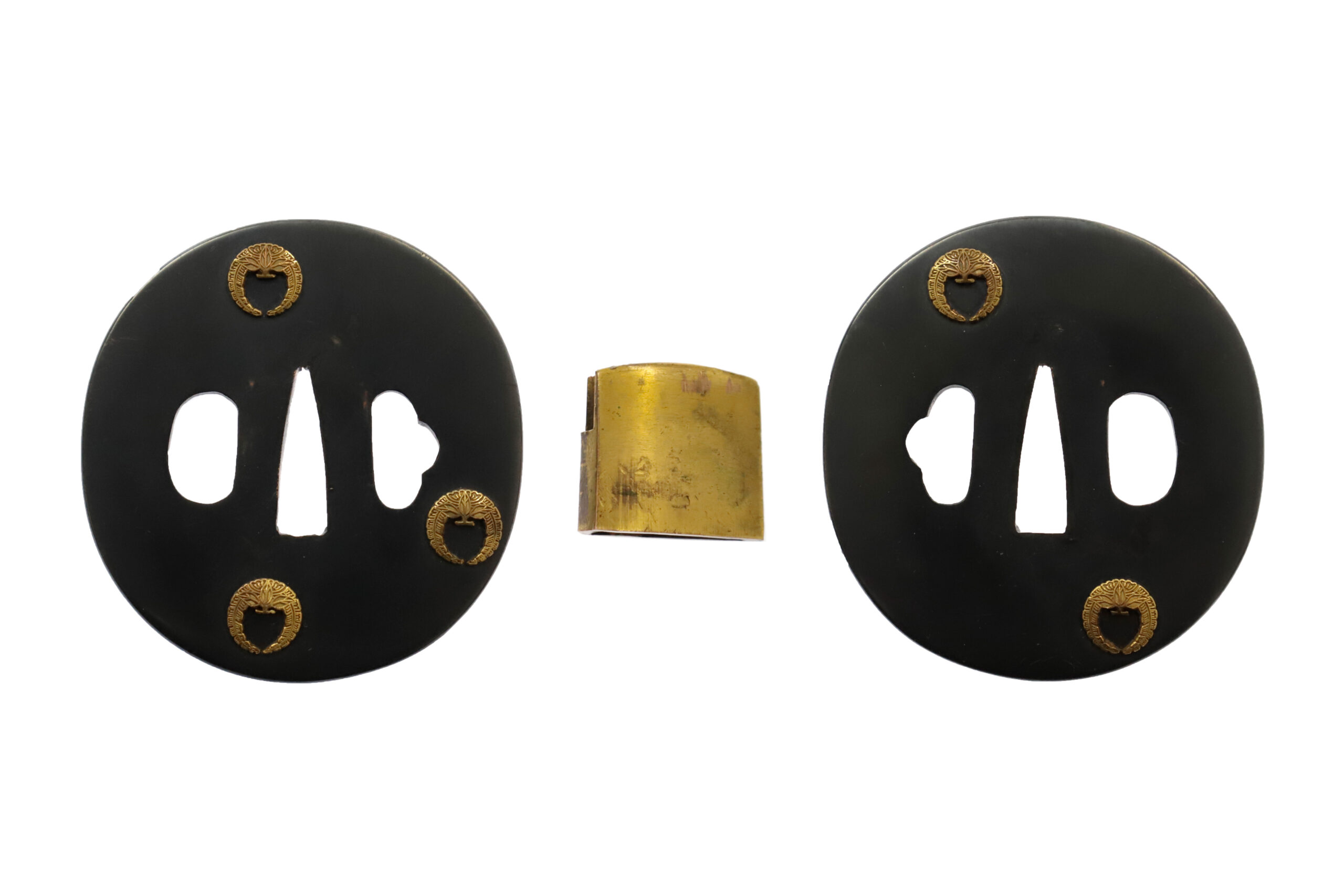
Saya: Saya is the scabbard for the Japanese sword.
The Kuruma (車) pattern decorates this scabbard. The Gosho Guruma (御所車) is the origin of this design. The Gosho Guruma is a commonly used term for the Gissya (牛車, oxcart).
The Suisha (水車, waterwheel) has also been used as a design. The Suisha Mon (水車紋) is a wheel-shaped pattern in which several ladles are attached to the ring. The waterwheel was developed as a familiar tool for daily life and was often used as a design for the Kosodes (小袖, a kind of traditional Japanese costume) in the Edo period. The Tsuchi (槌, hammer), which is similar to the Hishaku (柄杓, ladle), began to be drawn in the early Edo period. The waterwheel on which the hammers are drawn is called the Tsuchi Guruma (槌車). Since the hammer is a tool for hitting stakes, and “hit” is said Utsu (打つ) in Japanese, it is likened to the figure of Samurai hitting an enemy. Hitting the enemy is expressed as Teki-Wo Utsu (敵を討つ) in Japanese.
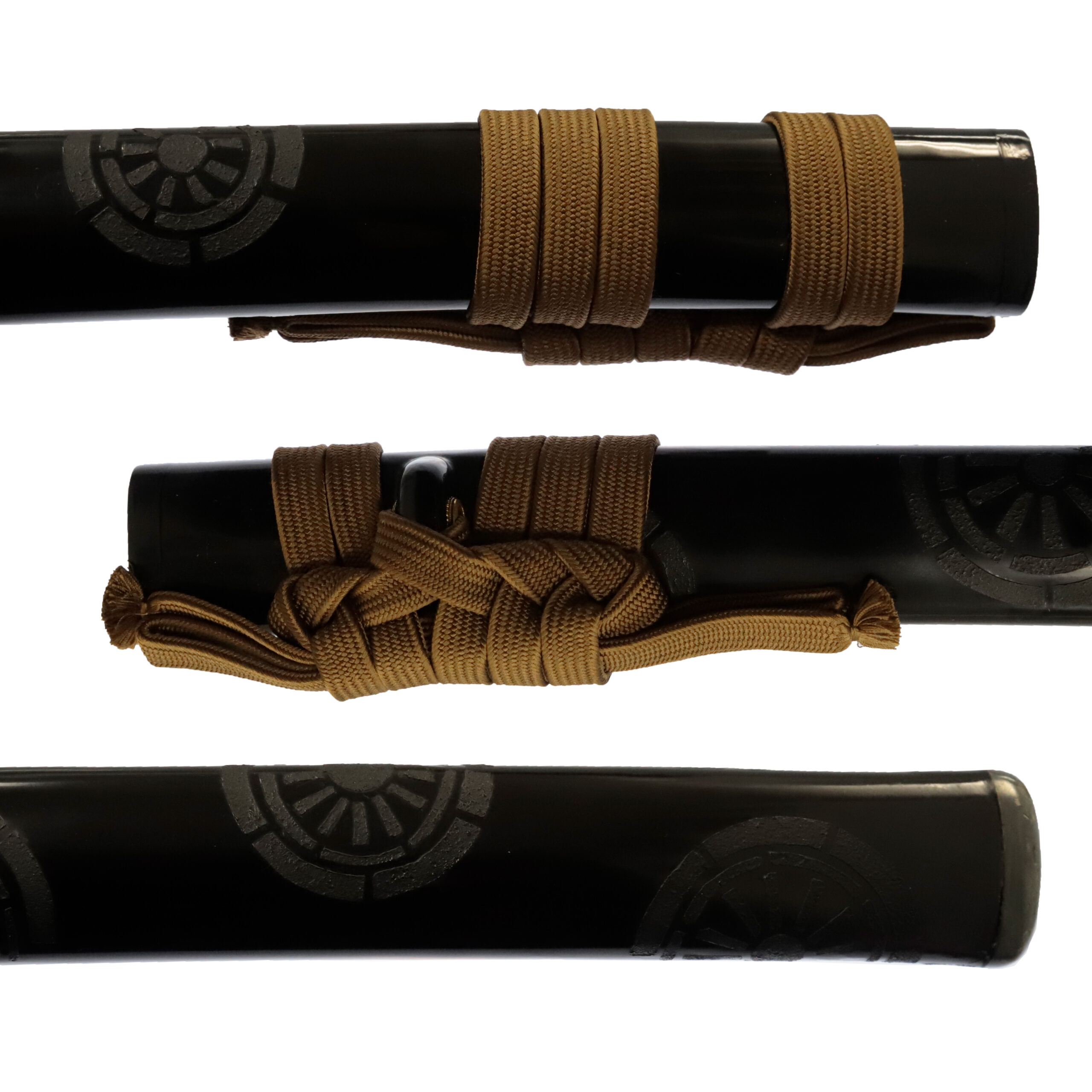
Authentication Paper: NBTHK TOKUBETSU Hozon Certificate for the blade (No. 1019226)
NBTHK, also known as Nihon Bijutsu Touken Hozon Kyokai (the Society for the Preservation of the Japan Art Sword), is one of the oldest Japanese sword appraising organizations in modern-day Japan. They authenticated the blade on Dec 14th in the 4th year of Reiwa (2022). They appraised it as Tokubetsu Hozon Touken, the blade especially worth preserving for Japanese society. The purchaser will receive this original certificate as well. We can also translate what is written into English and make a PDF file for your record if you request.
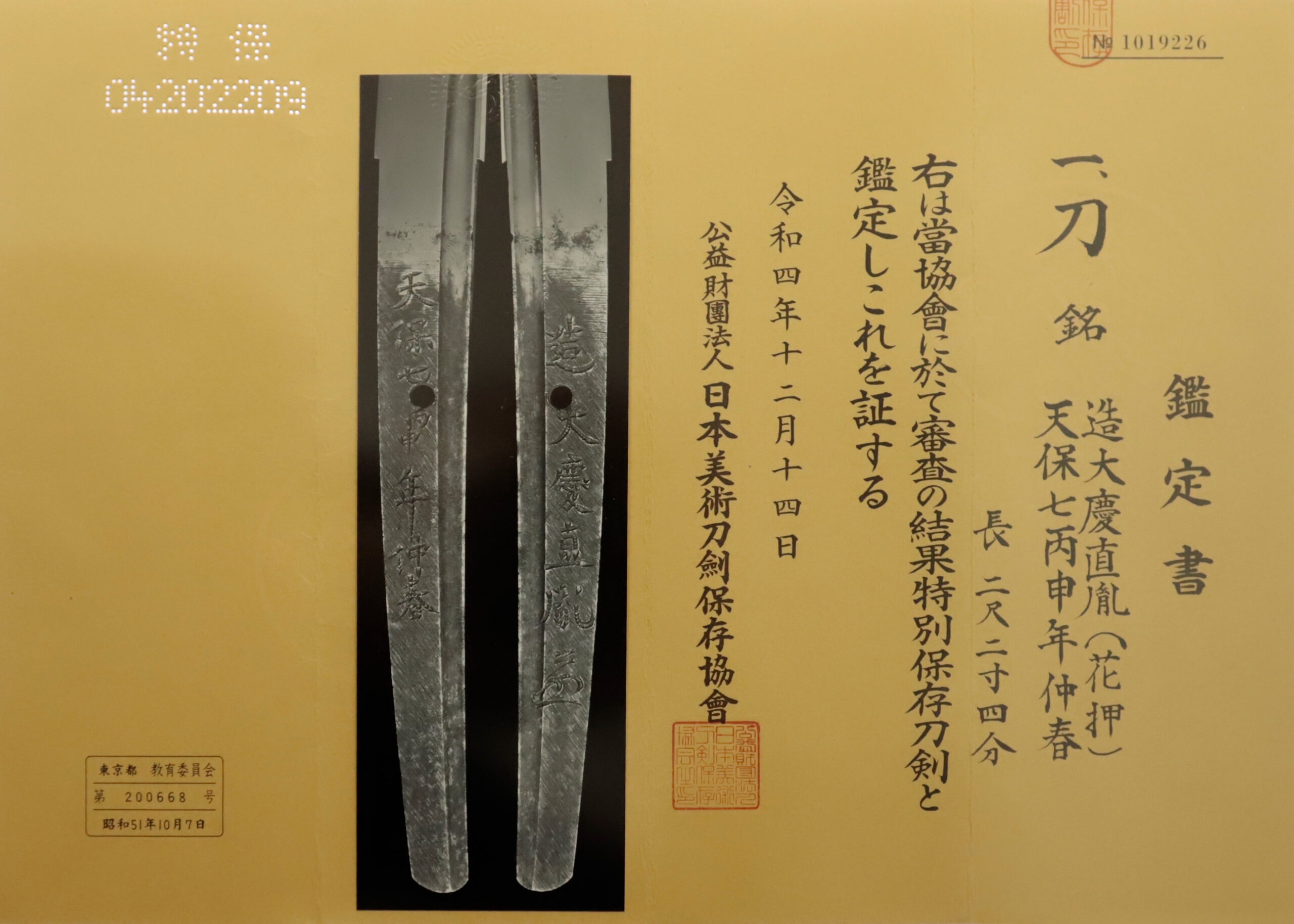
Registration Number: Tokyo 200668
The Board of Education in Tokyo prefecture issued a registration paper for this sword . It is called Jyu Hou Token Rui Tourokusho (銃砲刀剣類登録証). Bunkacho (The Agency for Cultural Affairs) acknowledges a Japanese sword with this paper as a work of art.
The sword needs to be traditionally hand-forged and made of Tamahagane carbon steel to be registered in the system. With this paper, its owner in Japan can legally own an authentic Japanese sword. Based on this registration number, we will apply for its export permit.
This paper will need to be returned to the board of education when the sword is being shipped abroad, but you can receive a copy of it. An English translation of this registration paper is available on request.
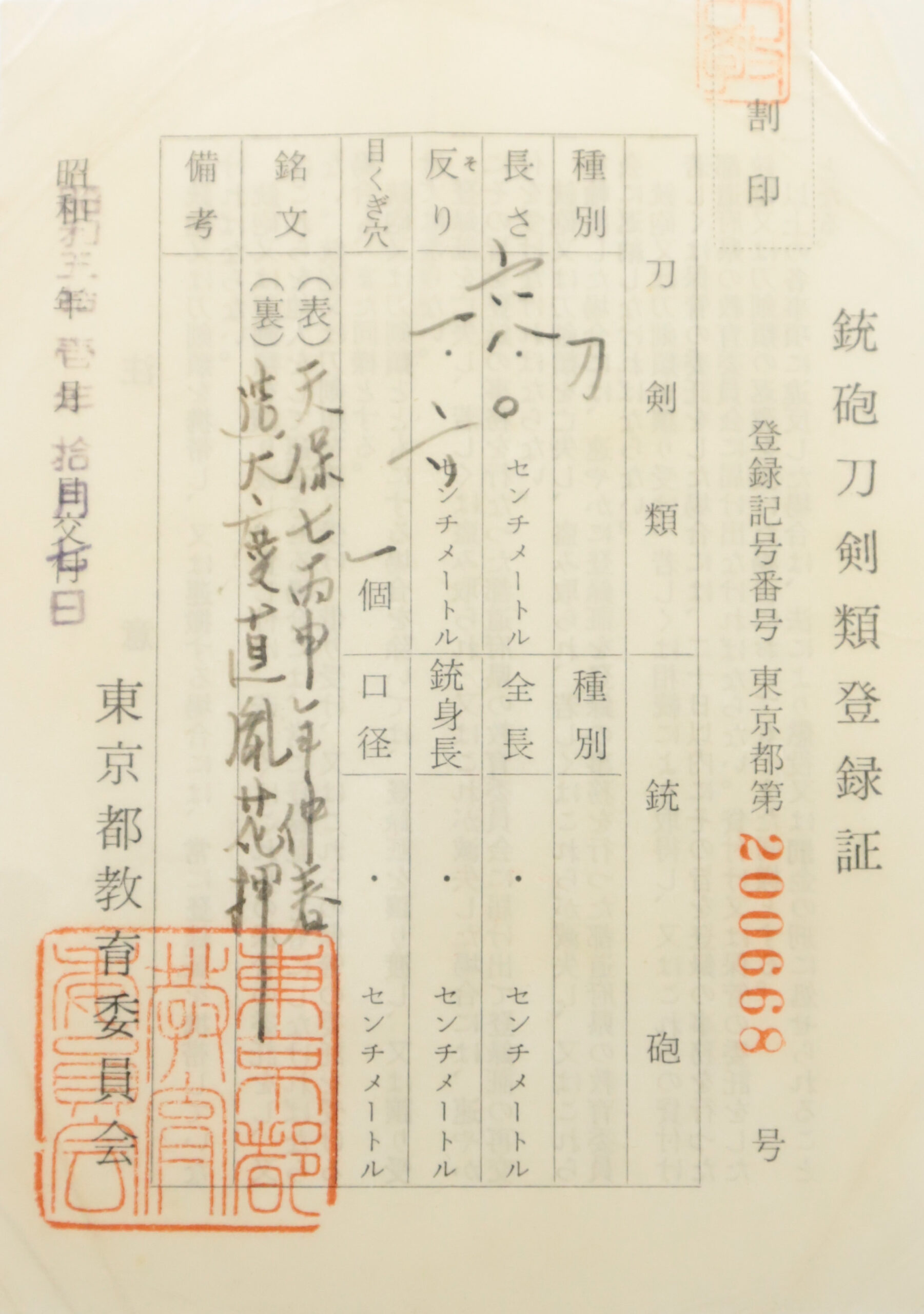
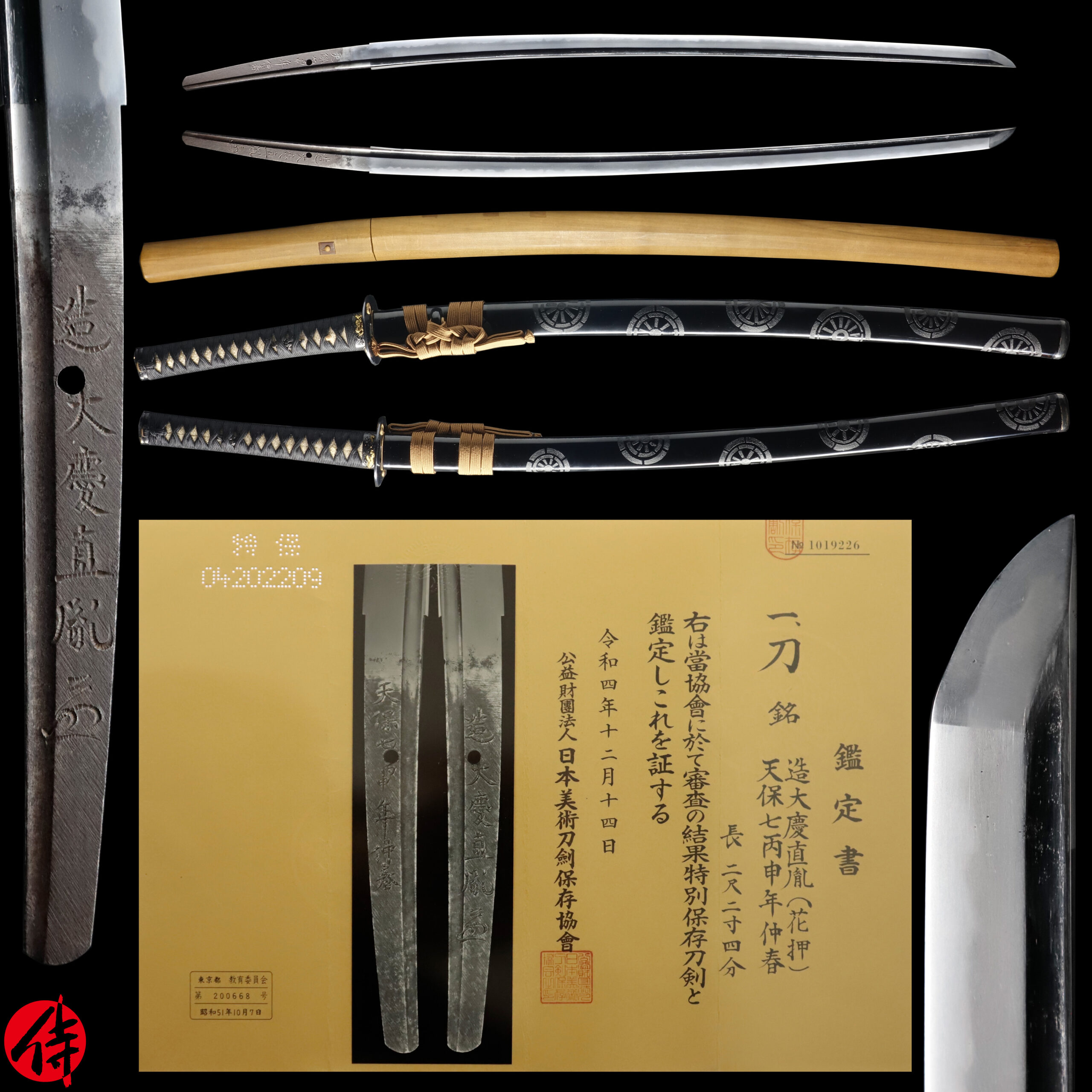
【About us】
Samurai Museum is located in Tokyo, Japan, exhibiting antique artifacts related to the Samurai history. Samurai Museum Shop is the place for those who are interested in Japanese culture and craftsmanship. We deal with antique Samurai swords/armor, traditional crafts made in Japan and so on.
【Japanese Sword& Export Process】
The Japanese swords we deal with are hand-forged edged swords made in Japan. It was made from the traditional carbon steel called TAMAHAGANE(玉鋼). Samurai Museum is familiar with the proper legal procedure for an antique/ authentic Japanese sword to be exported from Japan. We have sent more than 700 Japanese swords for the past few years (~2024) to amazing owners who appreciate its historical value.
Each Japanese sword is registered under the Agency for Cultural Affairs and the Board of Education in Japan. They issue a registration paper for each Japanese sword for its owner in Japan to legally possess it. The Japanese sword with its registration paper means it was traditionally hand-forged in Japan.
To legally export the sword from Japan to other countries, we will have to apply for its permit to the Agency for Cultural Affairs(Bunkacho) and return the original registration paper to the Board of Education. It normally takes around 2-4 weeks to receive this permit after submitting required documents. And we would like you to expect at least 1-1.5 months for your order to arrive at your given address after you ordered. For more detailed info, please click here.
It is allowed for residents in Japan to own authentic Japanese swords without a special license as long as they come with registration papers. Please feel free to contact us if you are a resident of Japan, whether temporarily or permanently. We will also assist you when you leave Japan and need to obtain the export permit.
【Payment Method】
We accept payment through Stripe (Credit card), PayPal, Apple Pay or ChromePay, all of which are secure payment methods. Also, you don’t need to make an account on Stripe for the checkout. If you prefer other payment method, please contact us. After confirming your payment, we will apply for an export permit. You may either pay in JPY, USD, AUD, CAD,EUR CHF or GBP. The price is set in Japanese Yen. Prices in other currencies are automatically calculated based on the latest exchange rate.

* If the amount is above 1 million JPY, Stripe or wire transfer will be the only options for payment.
【Shipping】
We have shipped authentic Japanese swords to the USA, UK, Canada, Mexico, Germany, France, Hong Kong, Finland and Australia. If you don’t live in these countries and like to order, please contact us first before making a purchase. We offer Free International Shipping as long as we can send antique Japanese swords by EMS.
We normally ship by EMS(Express Mail Service) provided by Japan Post. We will send you a tracking number for your order as soon as we hand it to the post office. We will put 100 % insurance on the shipping document without any extra charge. Based on the total amount, there might be a duty tax or other fee for you to pay, depending on the countries. We use package cushioning to protect the item and put it in a PVC pipe, which is one of the most secure packages because of its durability.
It will normally takes 5-14 days for the item to arrive at your given address after we dispatch it. Time of delivery is estimated as accurately as possible by the carrier but does not take into account any delays beyond our control such as by inclement weather, post office holiday seasons.
* If you live in Australia and like to purchase an authentic Japanese sword, please click here to know the detail.

【Review】
Here is one of the reviews we received from a customer who purchased an authentic Japanese sword from us. For more reviews, please click here.
“My experience overall with the whole process was wonderful. I had many questions about the history and process to purchase these treasures. All my questions were answered very timely and complete. The staff is very knowledgeable and very well versed if any questions do arise.”
【How to make sure the condition】
Please keep in mind that what you are going to purchase is an antique item. We uploaded high resolution photos for you to check its condition thoroughly. If you like to see more photos with different angles, please feel free to contact us. We will be happy to send them to you so that you can make informed decision. It is essential for us to know that you are happy with your choice of a sword. and we are prepared to use the best of our ability to serve you.
【How To Contact Us】
Please contact us through email, Facebook Messenger or Live Chat if you have any questions. You can find each icon on the right side of the website. Please click one of them to reach us. We will reply to you within 1-2 business days.
【The Art of Nihonto (Japanese Sword)】
Samurai’s history is a profound, eloquent legacy of ancient Japanese warriors in which millions of people worldwide are being fascinated. If you like to find out the art of Nihonto, please click here.
【A Guide to Japanese Sword Maintenance】
After acquiring an genuine Japanese sword, it is also important to know how to take good care of it. Here is the special video for you. Mr. Paul Martin, Japanese sword expert, shows you how to give proper maintenance to your sword. By mastering how to clean the Japanese sword, its aesthetic beauty will last forever.
When you purchase a Japanese sword from us, you can get a Free Japanese sword maintenance kit. It comes with four tools(Choji Oil, Uchiko Whetstone Powder, Peg remover, Oil Applicator). By watching the video instruction above , you can enjoy learning how to maintain your Japanese sword while appreciating it. If you have any difficulty assembling the sword or cleaning the blade, you can feel free to contact us.


MORE ANTIQUE JAPANESE SWORD FOR SALE
SWORDS WITHOUT CERTIFICATES FOR SALE
LEARN JAPANESE SWORD TERMINOLOGY
Thank you for reading all the information on the page. If you have any difficulty choosing the right Japanese sword for you, we will be more than happy to help you find the one that speaks to you the most. Please feel free to contact us.
